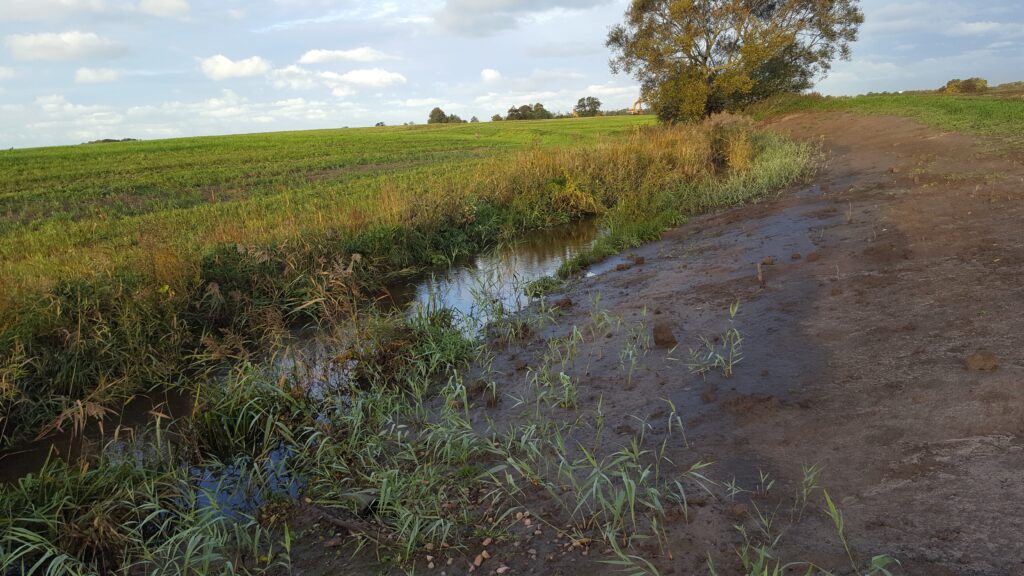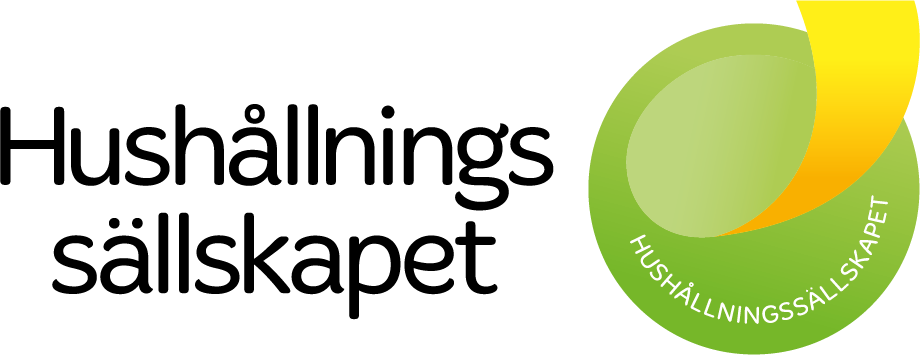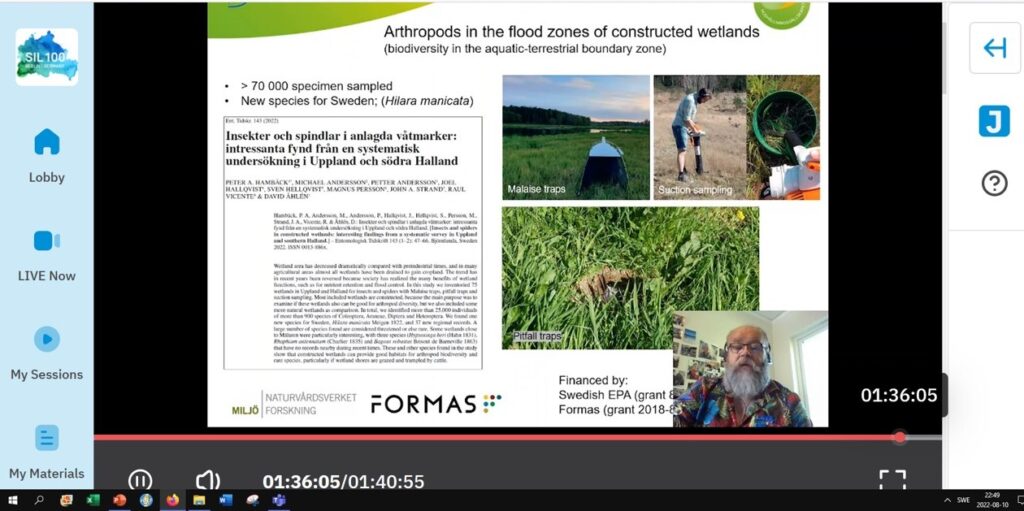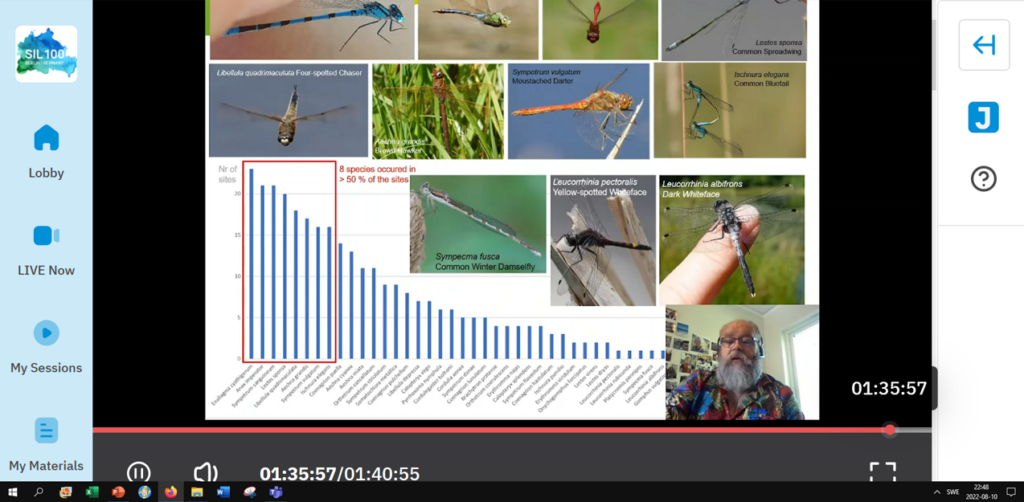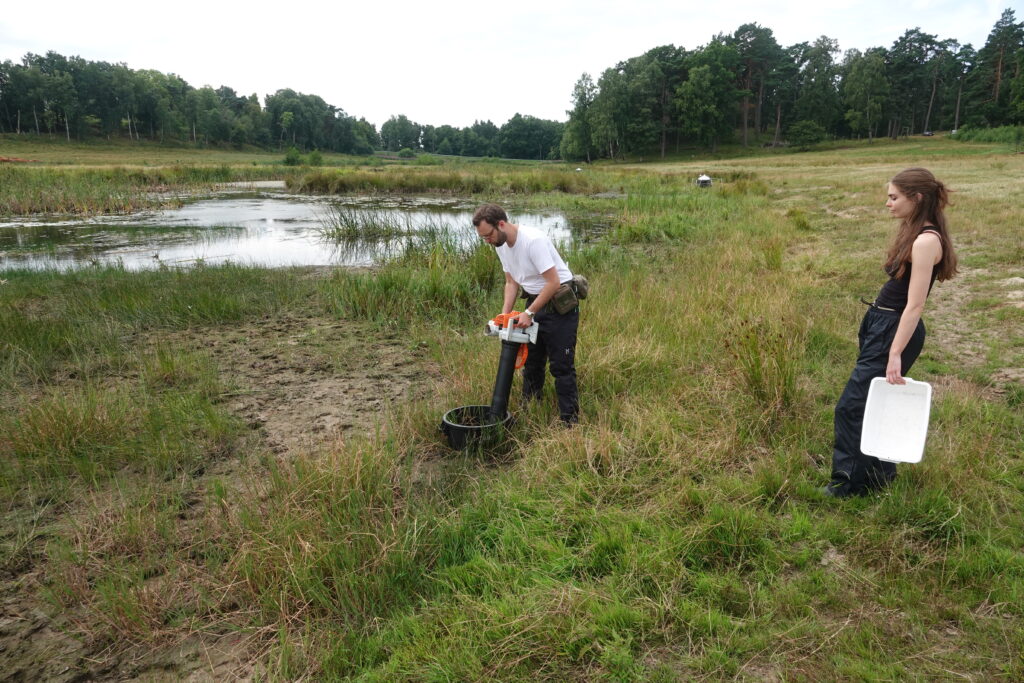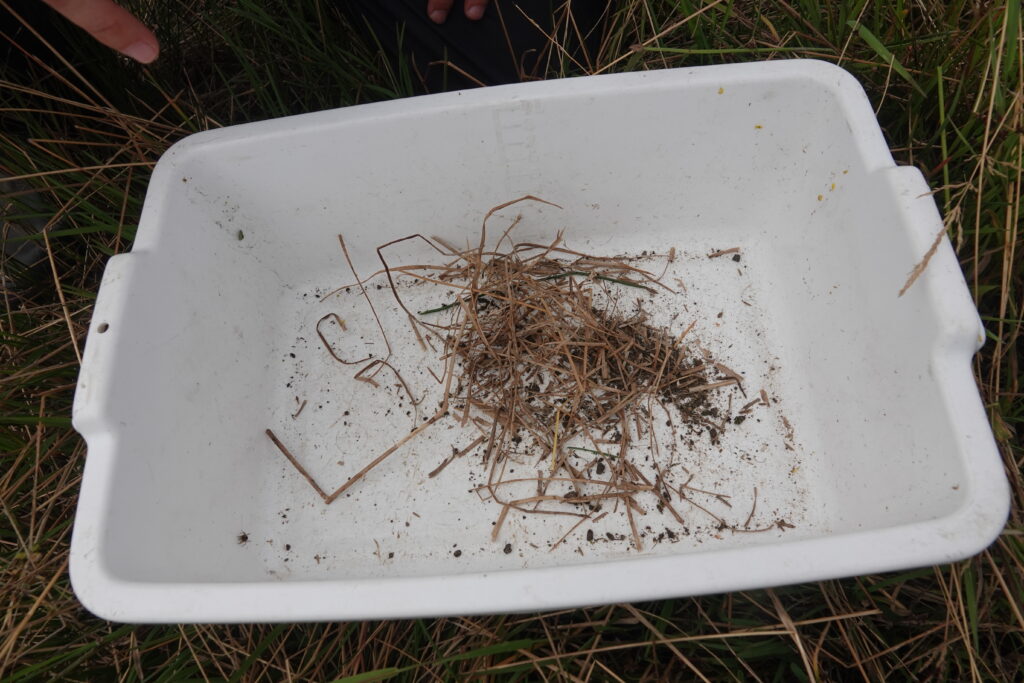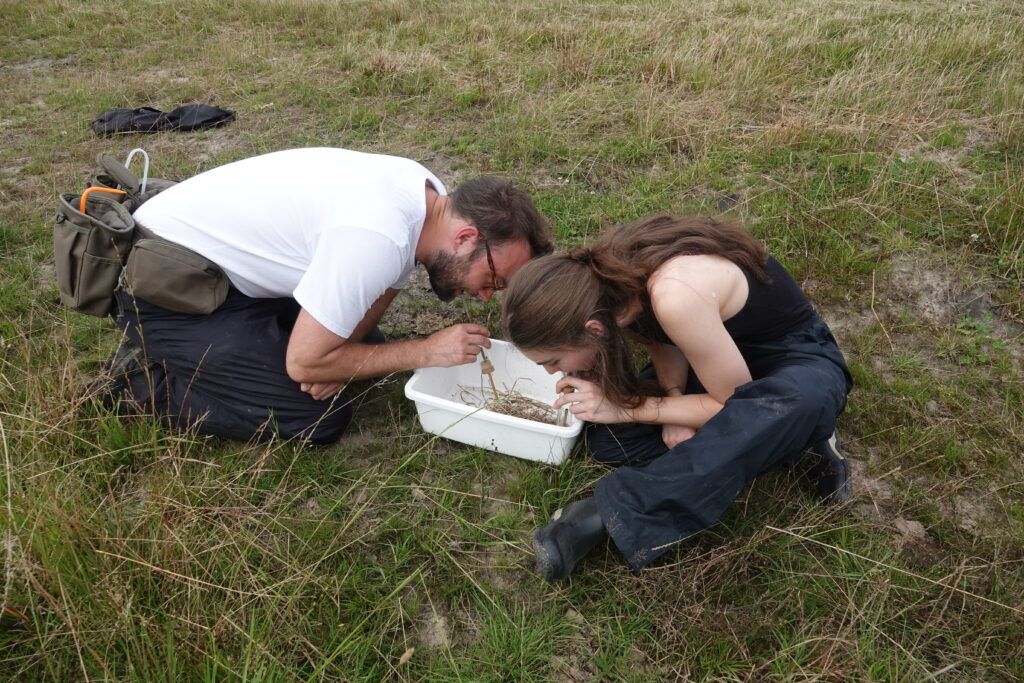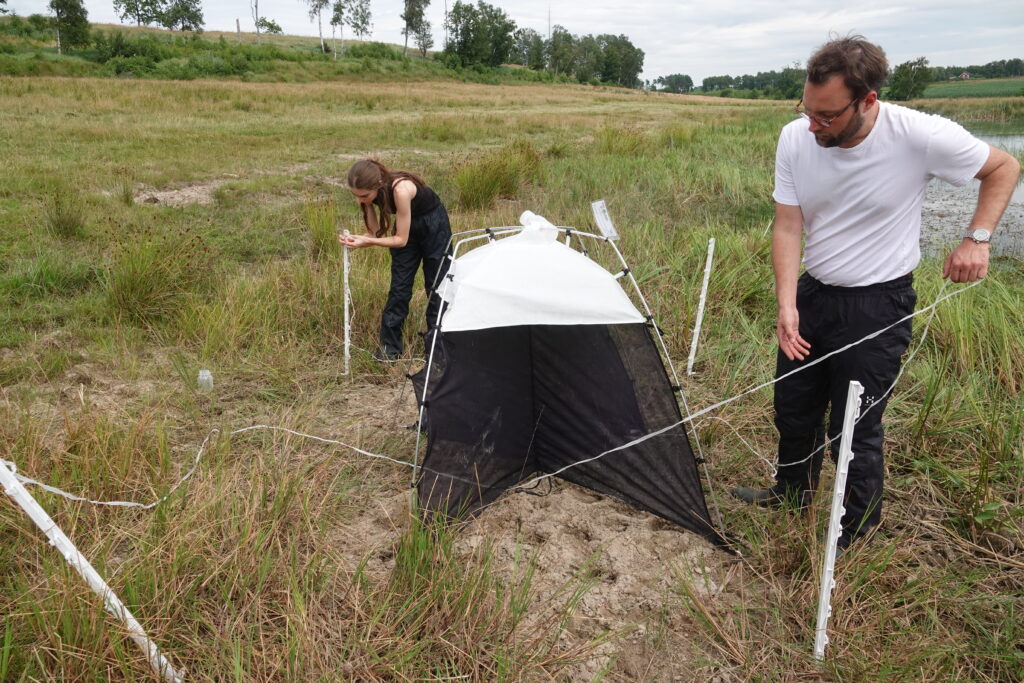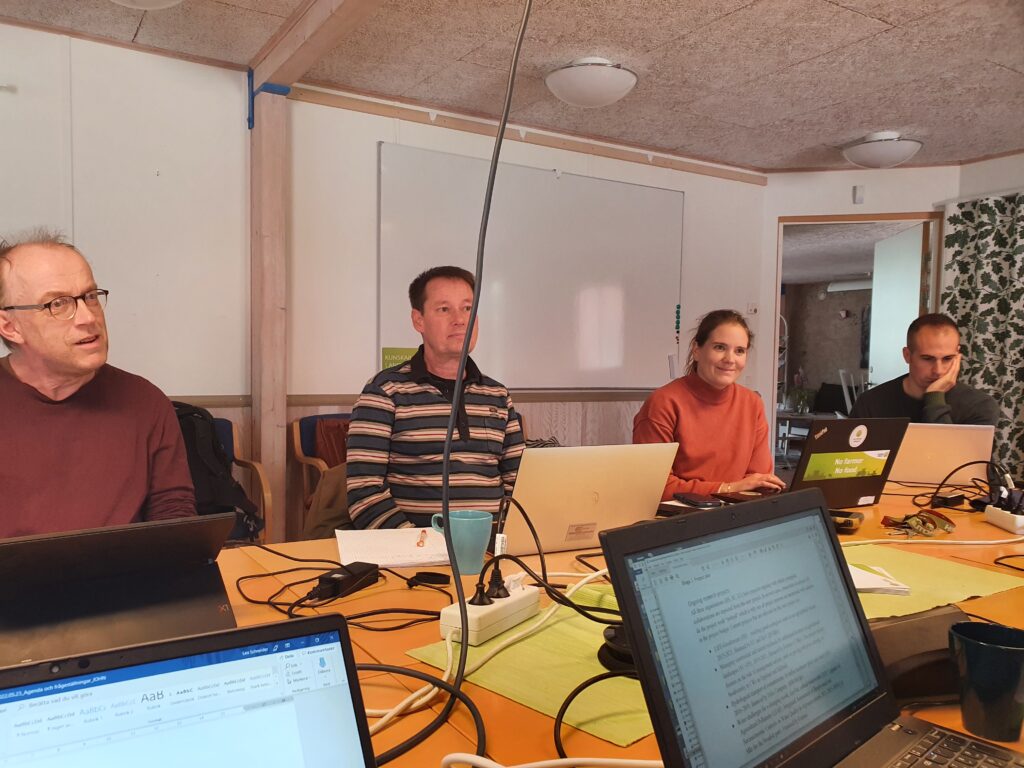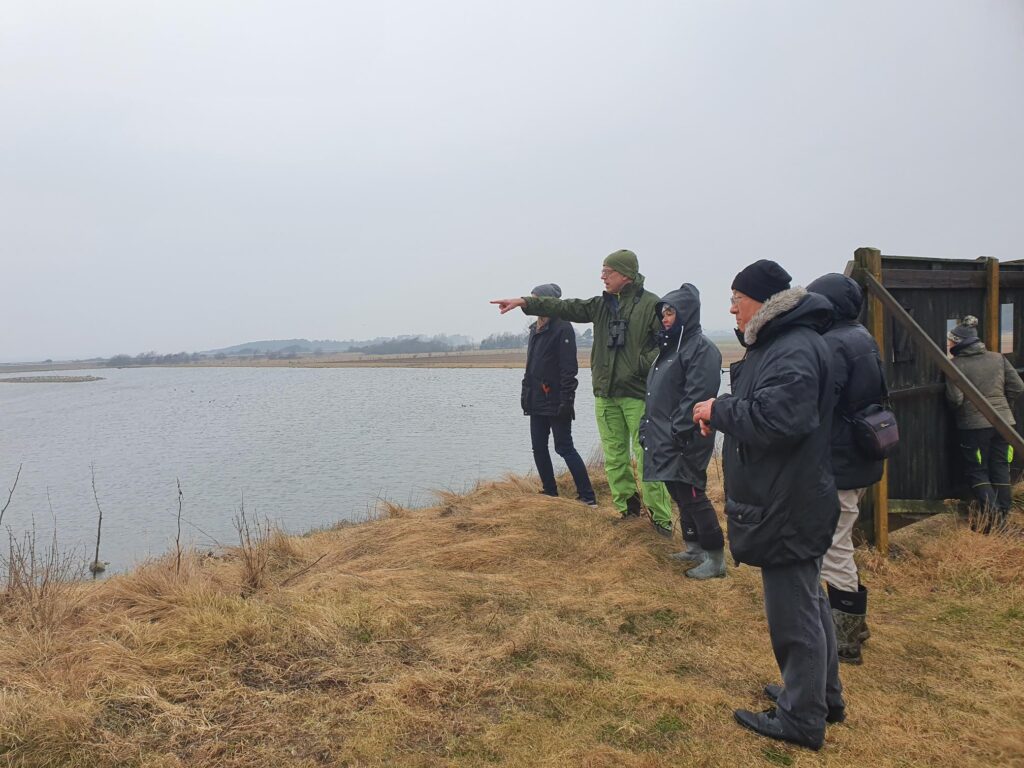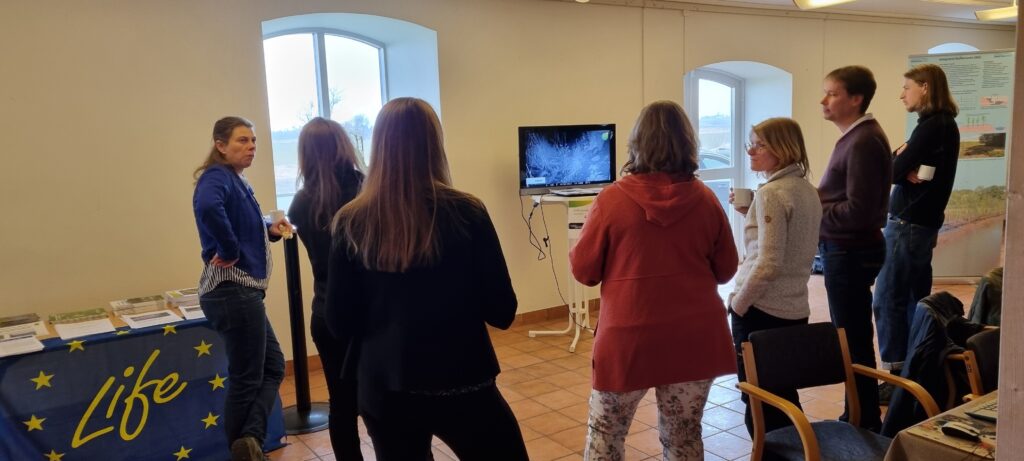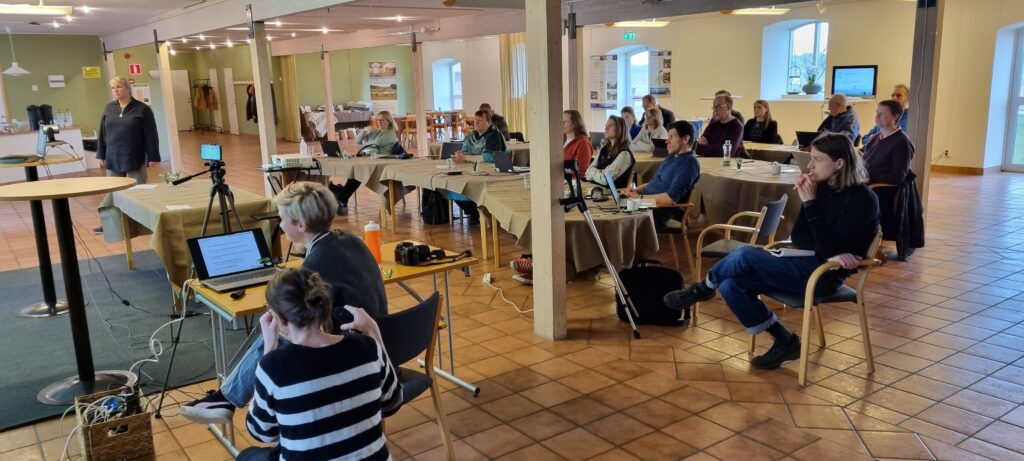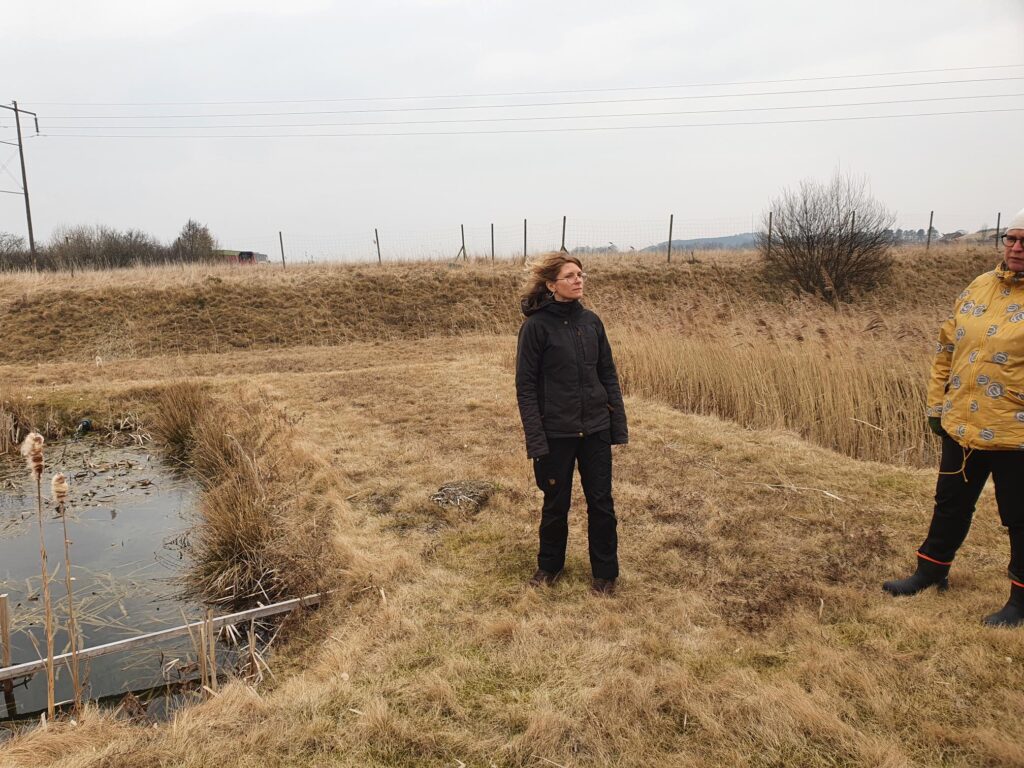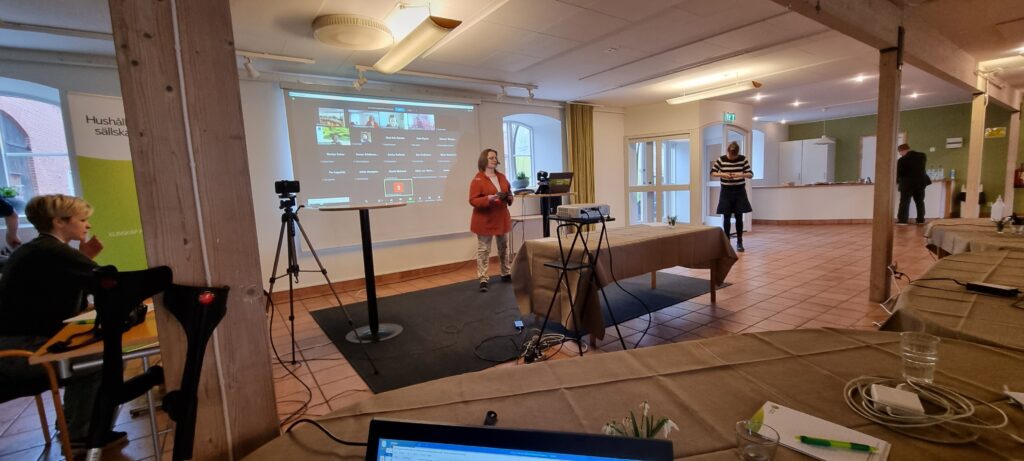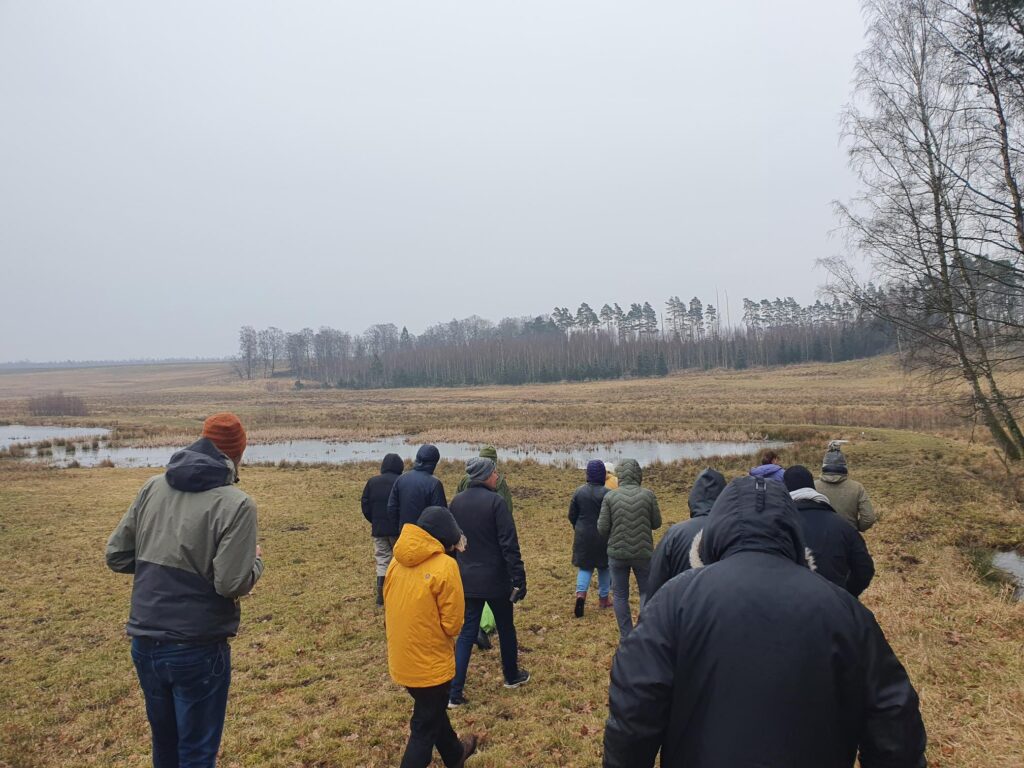Activities
A popular science publication as a result of project surveys
The data from the surveys of dragonflies in the project was, together with data from the project LIFE-Goodstream, compiled into a guidebook to the public and to the landowners. The aim is to raise awareness of wetlands and their biodiversity by focusing on dragonflies which are relativiely easy to study. The guidebook (80 pages) show all species recorded in Halmstad and give help on how to study dragonflies and include maps to 12 different sites that are good for ”dragonly hunting”. The book can also be downloades as a pdf via the link: Trollsländor i Halmstads kommun.
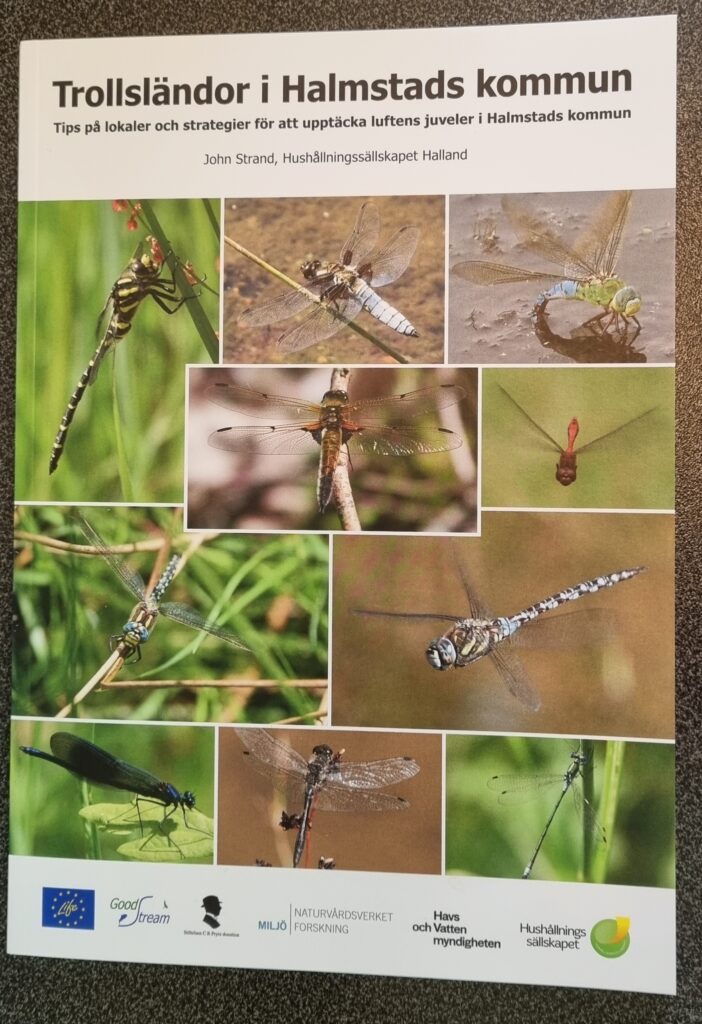
Two new thesis/degree projects in the project are now published
Tobias Engzell studied the water level fluctuations of constructed wetlands in relation to CW location, size and soil types. Read the paper by following the link in the title: ”Anlagda våtmarkers vattennivådynamik: Typmönster och dess samband med omgivande faktorer”
Ellen Nein studied drought effects on Diptera, Follow the link to read the paper: Hydrological drought effects on Diptera families and functional groups in constructed wetlands: Differences between sampling methods
Two upcoming presentations of our work
The 31 of May, Peter will talk about multifunctionality of wetlands at ”Baltic Breakfast” (https://www.su.se/stockholms-universitets-ostersjocentrum/policyverksamhet/baltic-breakfast#kommandebalticbreakfastolikav%C3%A5tmarkerkr%C3%A4vsf%C3%B6rattn%C3%A5olikam%C3%A5l). It can also be viewed after the event at the link above.
The 25-26 of May John will present some results from our project at a water conference at the Bolmen Research station https://forskningsstationbolmen.se/valkommen-till-vattenkonferensen/
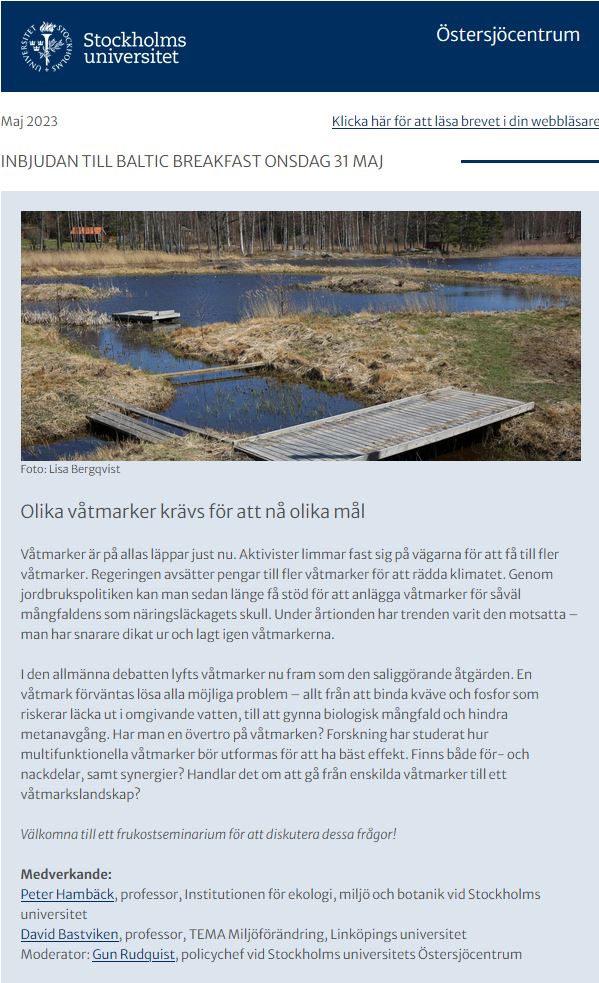
Our latest paper acknowledged at ”Global Water Forum”
Our paper on Tradeoffs and synergies in wetland multifunctionality, recently published in Science of the Total Environment, was displayed at the Global water forum, with a new short summary written by Peter Hambäck. It can be found here: https://globalwaterforum.org/2023/02/23/tradeoffs-and-synergies-in-wetland-multifunctionality-a-scaling-issue/
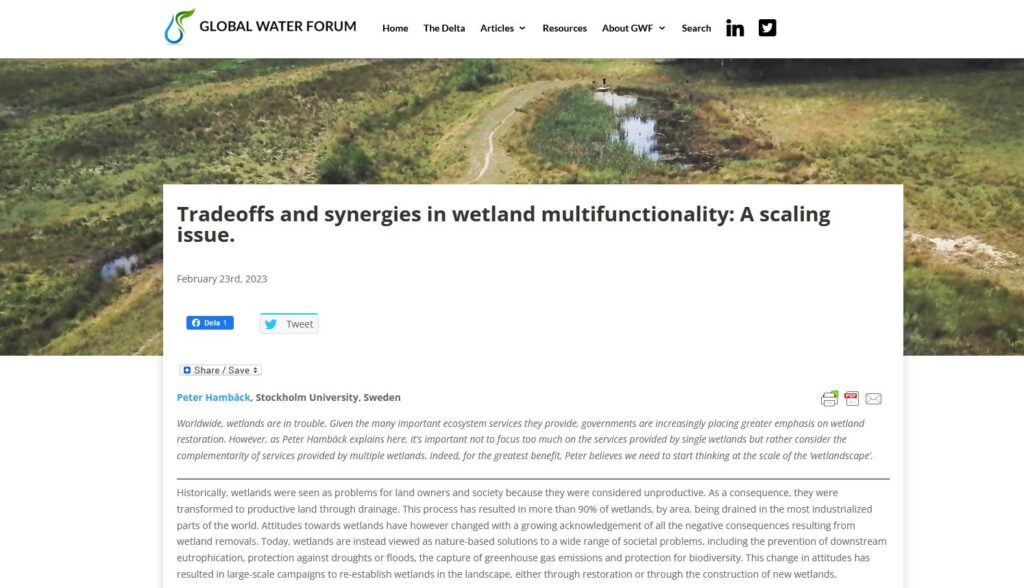
Paper submitted
Today we submitted a paper to ”Svensk Botanisk Tidskrift” (Swedish Botanical Journal) on the method (Stand up paddle, GIS-transects) and results from our survey of submersed vegetation in the constructed wetlands.
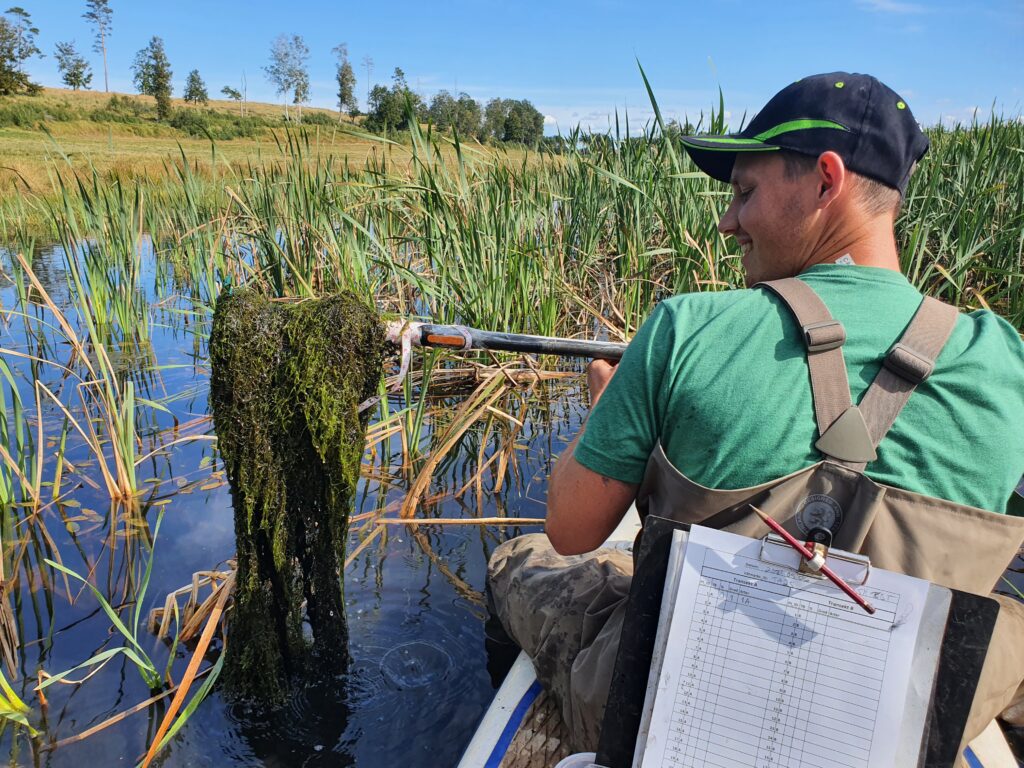

Newspaper article about the project published in several media
An article about the work by Peter and David at Stockholm University, on the invertebrates in the constructed wetlands in our project was published by TT and several newspapers. To read the article (in Swedish) follow one of the links:
https://www.ystadsallehanda.se/nyheter/spindeljakt-med-dammsugare-ger-svar-om-vatmarker-15644fe5/
https://www.svd.se/a/8J51p2/spindeljakt-med-dammsugare-ger-svar-om-vatmarker
https://www.aftonbladet.se/nyheter/a/O862kV/spindeljakt-med-dammsugare-ger-svar-om-vatmarker
New paper published!
Now our paper on Tradeoffs and synergies in wetland multifunctionality have been published in the journal Science of the total Environment. It is a joint effort by several researchers in different fields and was initiated at a conference and workshop in Stockholm in October 2021 (se post further down for more details on that). It can be found as full text pdf here.
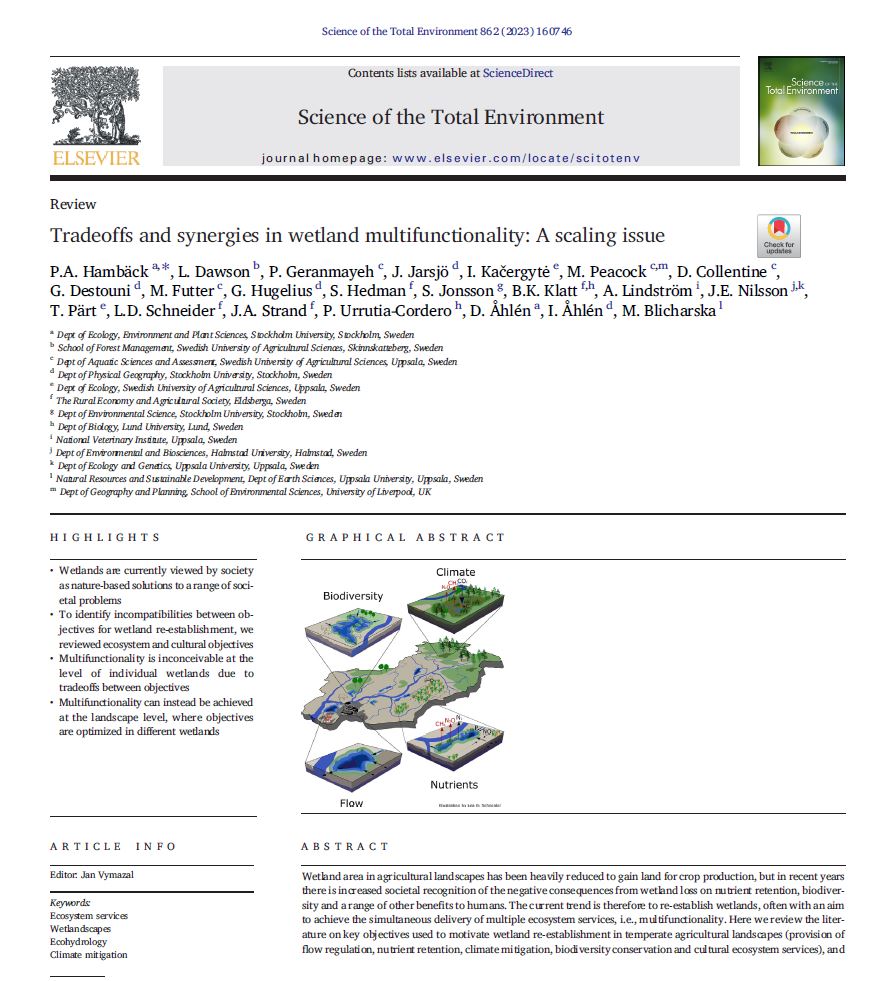
Project meeting at Stockholm University on data handling
We had a meeting in Stockholm the 23-25 November to discuss the hydrology and bathymetry data. The enormous amount of data generated from the water level meters and the bathymetry surveys needs to be processed in an efficient way to be able to evaluate. Now we have developed a strategy to incorporate the data into GIS for further handling and evaluation, and to produce bathymetry maps of all the wetlands.
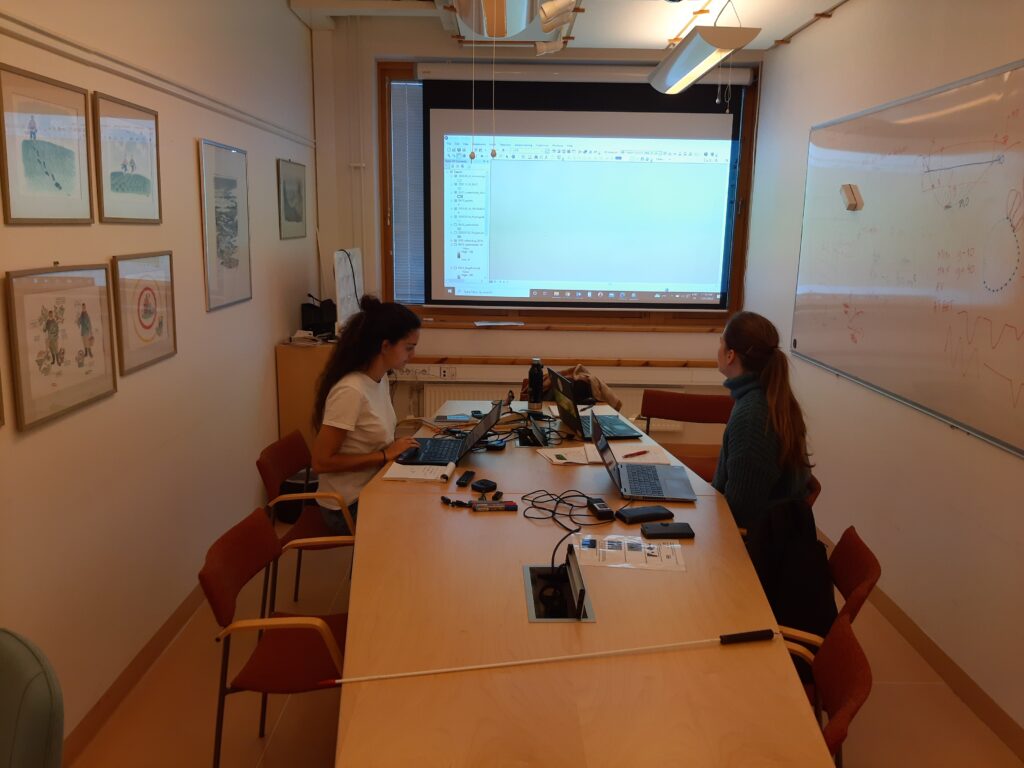
Meeting with landowners
The 26 of November, we arranged a combined Christmas dinner and workshop at Hushållningssällskapets workplace Lilla Böslid, Halland for all landowners in our projects, where we also presented results from our studies. Peter and David from Stockholm university gave talks about the invertebrate results and a citizen science project on mosquitoes that we are planning for next year. Ca 40 persons attended, and we got much positive feedback from the landowners.


No, more wetlands will not lead to malaria epidemics in Sweden!
The risk of getting back malaria in Sweden is sometimes suggested as a real concern in discussions regarding large state-funded efforts to re-create wetlands to mitigate climate change or reduce eutrophication and increase landscape biodiversity. The latest we have found regarding this is from a magazine published by Derome where a professor in history, Kalle Bäck, calls the risk of malaria a “terrible consequence that nature conservationists have missed”, see attached article (in Swedish). The problem is that he is completely wrong.
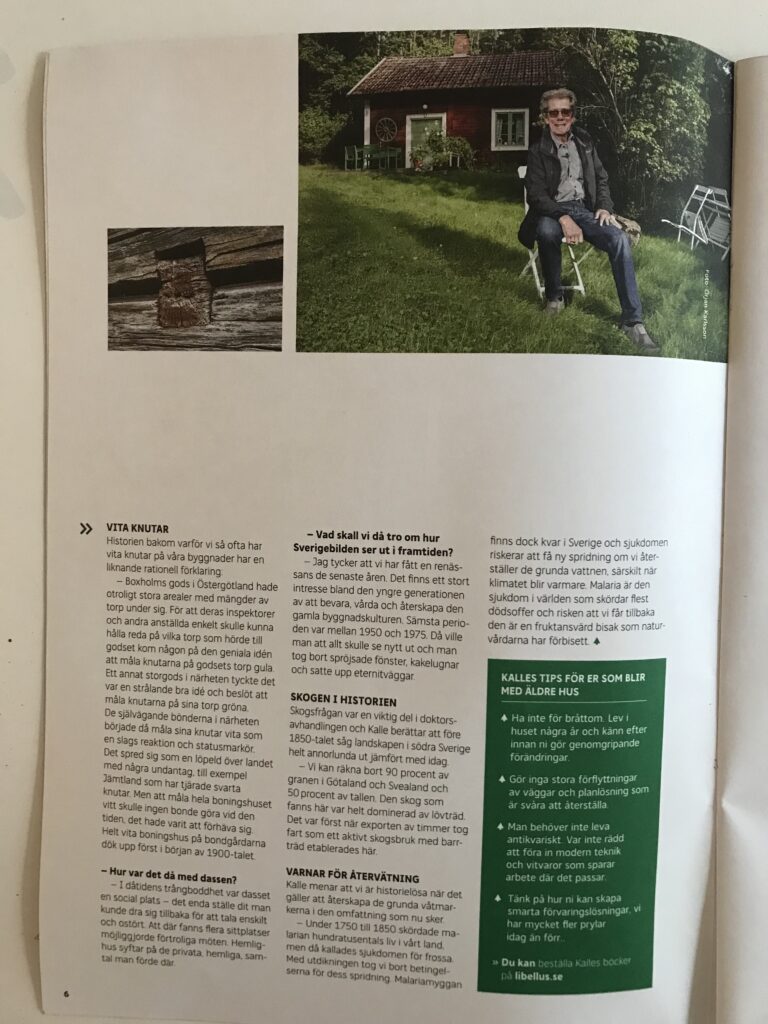
Anders Lindström at SVA, the National Veterinary Institute states:
“It is a strange statement about malaria that Kalle Bäck makes. Firstly, it can be stated that the malaria that existed in Sweden in the 18th and 19th centuries was caused by Plasmodium vivax. The parasite that Bäck refers to as causing the most deaths in the world is Plasmodium falciparum, that is, a completely different species. P. falciparum has never been found in northern Europe because it is too cold here for the parasite to develop in the mosquitoes. Plasmodium vivax can certainly also kill infected humans, but to a much lesser degree. During the period 1749 – 1820 an average of 1045 people died per year from malaria in Sweden. The disease was endemic and common along the coast from Blekinge up to Ångermanland and around Mälaren and Vänern. When there were epidemic outbreaks, it appeared all over southern Sweden.
The species of malaria mosquitoes responsible for the spread of malaria parasites overwinter as fully grown female mosquitoes. You can still visit almost any stable attic and find malaria mosquitoes. The dredging of wetlands certainly reduced the population of malaria mosquitoes, but as I said, the mosquitoes are still there and are not rare.
The fact that malaria disappeared in Sweden is considered mainly to be due to better housing standards. The mosquitoes thrive in dark and damp stables. When the housing standard was lower, there was no major difference between animal houses and residential houses. Often the animals were outdoors all year round. When the houses became warmer, brighter, cleaner and with lower humidity than before, the mosquitoes preferred to stay in the increasingly common animal stables. Since malaria mosquitoes almost always bite at night and there is food for them in the stables, fewer people were bitten and the transmission of malaria parasites decreased until it stopped.
The improved health care and the use of quinine also reduced malaria parasites. In order for us to bring back malaria in Sweden, it would be required that we get a significant part of the population infected by malaria parasites and at the same time bring back the 18th century housing standard and that the healthcare system fails to identify and treat malaria cases. “
A milestone is reached!
Now we have done the bathymetry measurements for all the wetlands! Sam and Sofia did the last one yesterday (the 111th). Great work!
New arthropod sampling this week
This week Peter and assistant biology student Ellen Nein are doing a new sampling campaign in the 8 wetlands that were emptied this summer and the 8 controll wetlands. This follow-up sampling will also be repeated next year to study more long-term effects of droughts on the arthropod communities in the floodzones of wetlands.
Vegetations survey gave interesting botanical results
The vegetation surveys of ca 25 wetlands are now finished. In total ca 15 submersed species were found, including at least 4 Charophyte species. Among the more interesting findings were the Bryozoa Plumatella repens and 2 Nitella species that are on the Redlist (NT); N. gracilis and N. mucronata. Unfortunately we also found the invasive species Elodea nutallii in some wetlands. Below are some photos of some species. It is clear that constructed wetlands in the agricultural landscape can be important also for threathened and rare plant species, and the the occurrence of invasive species is frequent.
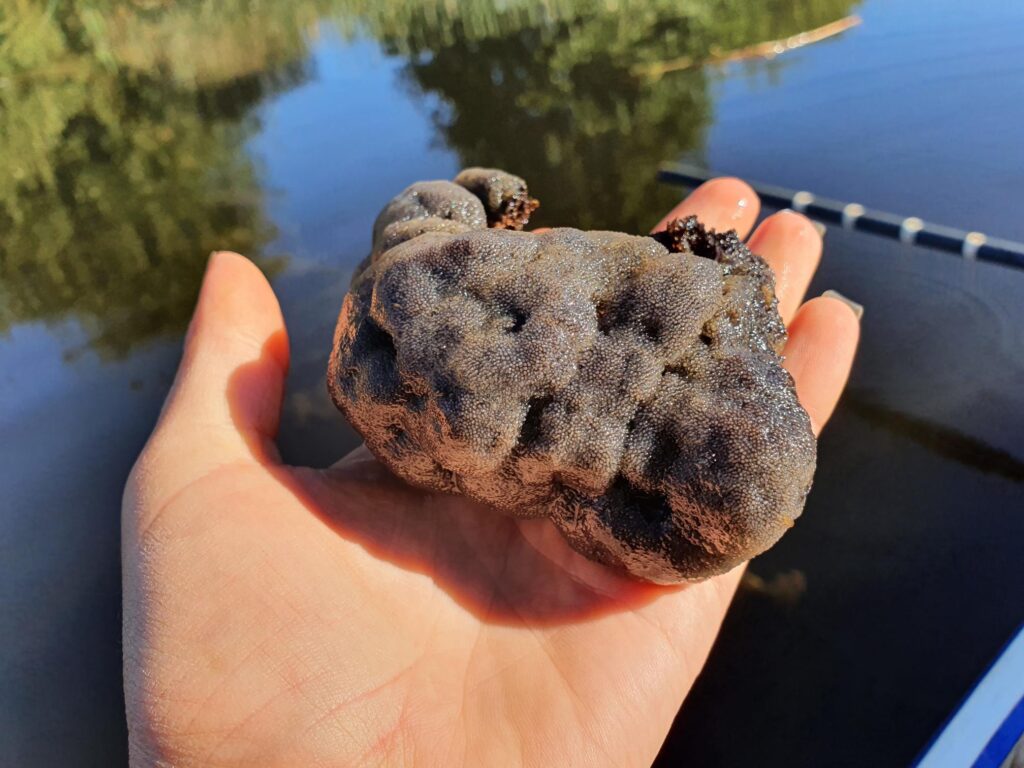
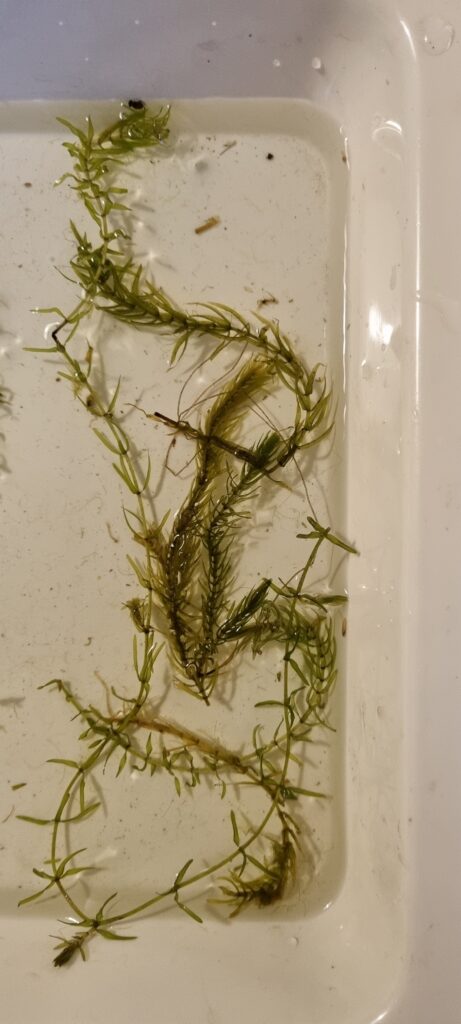
Vegetation surveys started
We have started with the surveys of submersed vegetation in the wetlands. This is also part of our networking with the Cyano bacteria project at Lund University run by Pablo Pablo Urrutia Cordero. The macrophytes are surveyed every 10 meters at 2 transects perpendicular to each other in each wetland. It is always interesting to see how the planning (first photo) holds up when it meets the reality of the field work (second photo)…So far so good, Our idea with two persons on the SUP where one handles the GPS to find the right sampling site and does steering and paddling, and one person doing the actual sampling seems to work.
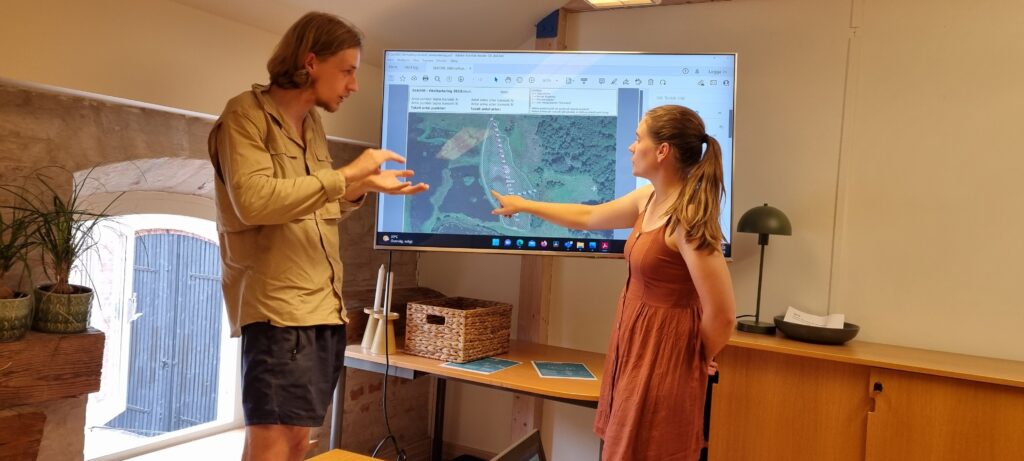
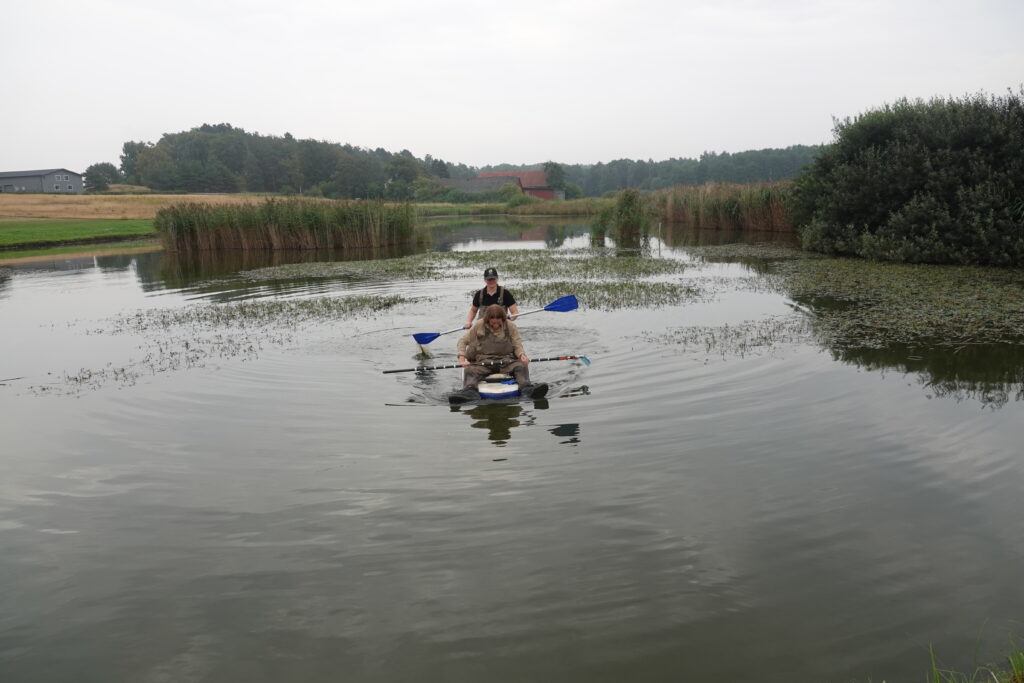
Presentation att SIL, Berlin the 7-10 of August
John had an online presentation at the 36th SIL conference in Berlin, Germany. The presentation focused on the project LIFE-Goodstream, but some results on arthropods in the flood zones and adult dragonflies from the Buffer project were also presented.
Drought experiment terminated
After David and Beata did the final arthropod sampling the first week in August we know have started to return the water levels to normal again. Below are some photos from David during the final sampling when the water tables were lowered.
Second sampling in the field experiment
This week David is in Halland to do the follow up-sampling in the field experiment where we have emptied 8 wetlands. He had help from an Intern from the biology course at Stockholm University, Beata Wolgers. Some maintanence of one of the Malais trap was also neccessary since the cattle can be a bit too curious.
Presentation at the XXVI International Congress of Entomology, Helsinki 17-22 July
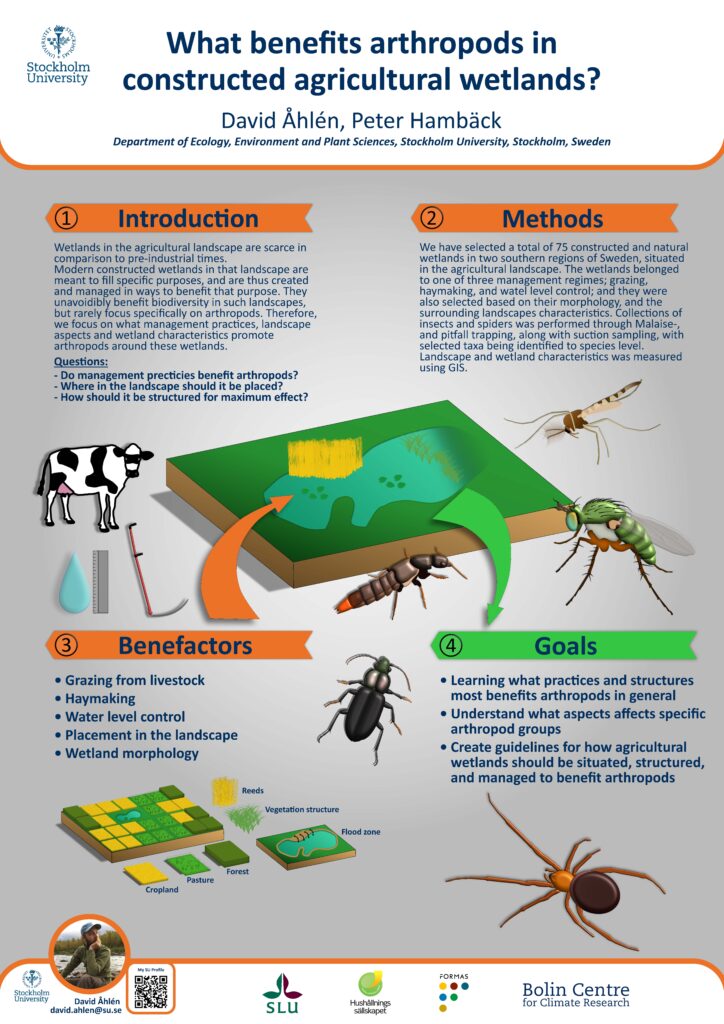
David presented the studies on arthropods in the constructed wetland flood zones at the entomology congress in Helsinki, Finland. The poster can be seen above.
Pulling the plug in a wetland
Here Sofia and Kalle do the emptying of one of the 8 wetlands. In some wetlands it is an easy process…
Field experiment started (water level manipulations)
This week we started a field experiment where we simulate drought by emptying (lowering the water table) some wetlands. We emptied 8 wetlands and have another 8 as controls. The purpose is to see the effect of drought on the arthropod communities at the shorelines of the wetlands. Peter did the ”pre-drought” sampling with Malaise traps, color bowls, suction sampling and pitfall traps. We also took photos of the wetlands with a drone before and after emptying. After a month of dry-out we will repeat the invertebrate sampling, and also repeat it next year to study long-term effects.
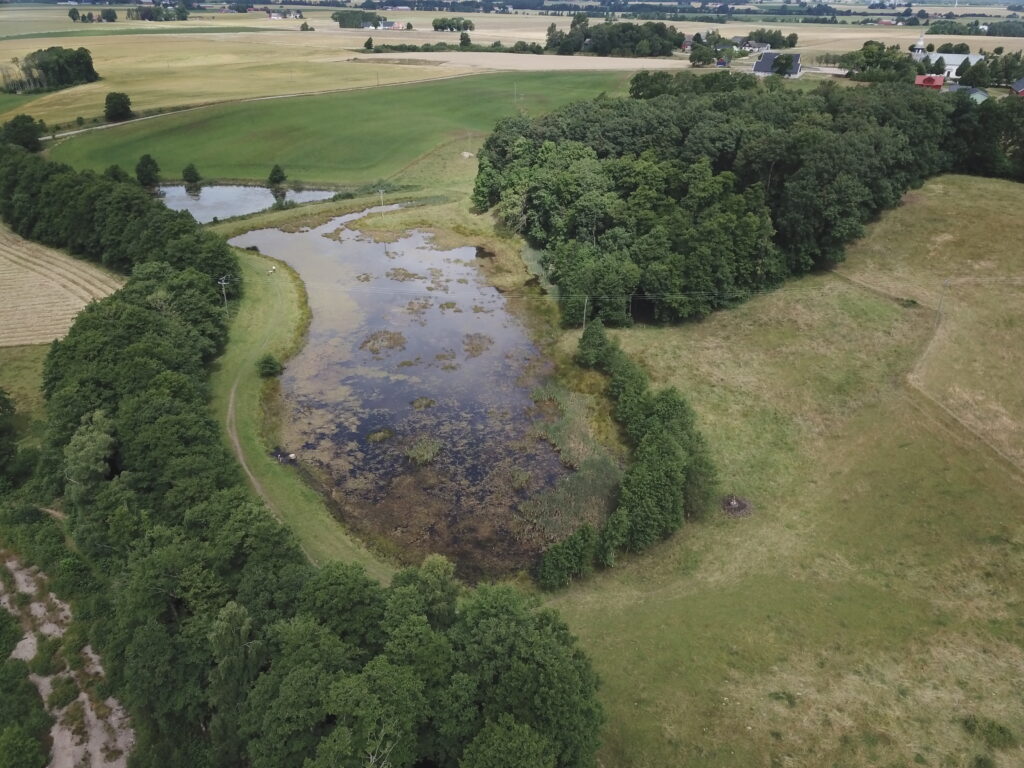
DCIM\100MEDIA\DJI_0225.JPG 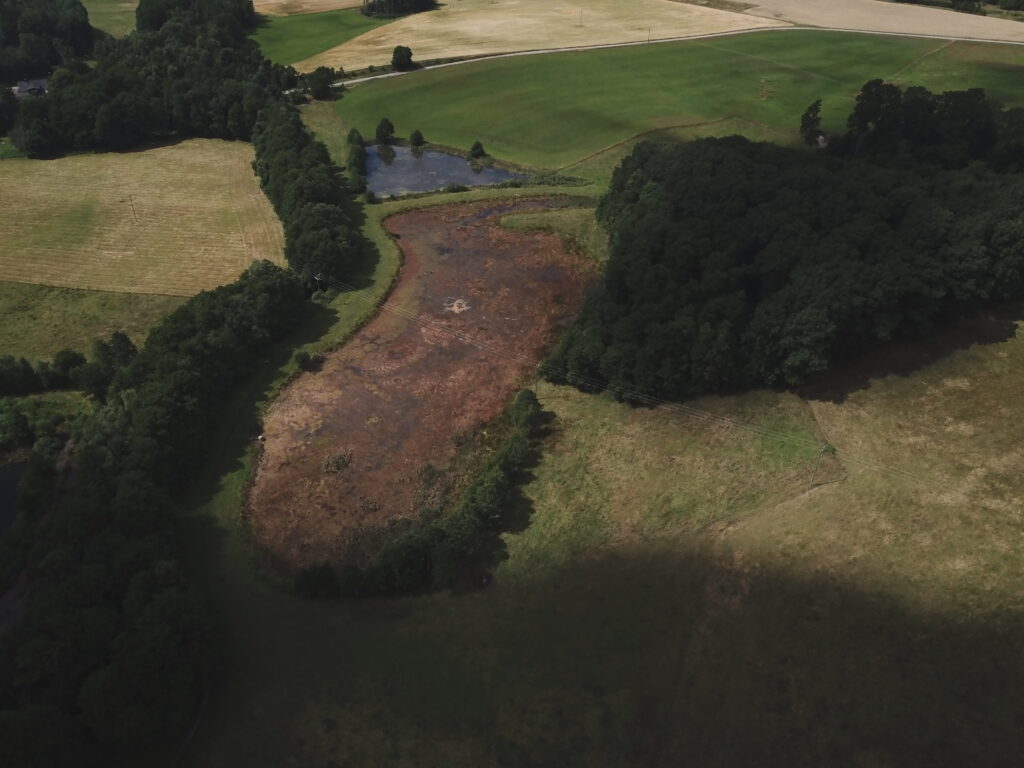
DCIM\100MEDIA\DJI_0048.JPG
Project group meeting 26-27 of May
We had a 2-day project group meeting at Lilla Böslid, Halland where we discussed among other things; current available data, future sampling strategies and forthcoming papers from the projects.
Scientific paper published
The first paper from our surveys is now published. The title is: Insects and spiders in constructed wetlands: interesting findings from a systematic survey in Uppland and southern Halland, and is published in Entomologisk Tidskrift 143 (1–2): 47–66. It can be viewed and downloaded by clicking on the image below:
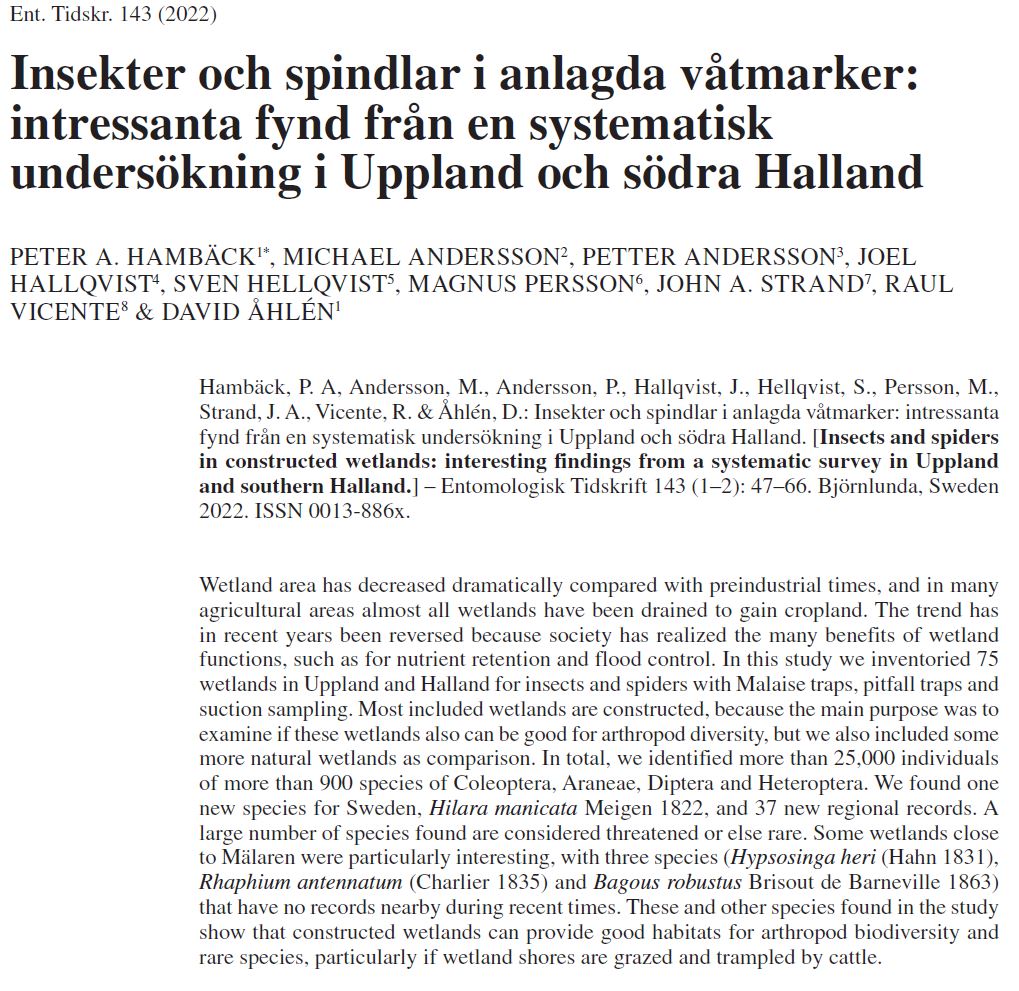
SEPA`s annual meeting on Wetland ecosystem services held at Halland
The annual meeting for the Swedish Environmental Protection Agency´s research grants on Wetland ecosystem services was held att Hushållningssällskapet Halland/LIFE-Goodstream the 17-18 of March. It was a hybrid meeting with ca 25 persons on site and ca 45 joining digitally. It was a very nice meeting (despite the weather during the field day) and we visited Halmstad University´s experimental set-up aswell as some of our sites in the Buffer project. All the 8 projects presented their work and we got oppertunities to good discussions and networking during the meeting.
Popular scientific article submitted
Today we submitted a short article to inspire the public to explore wetland shorelines in order to experience the high biodiversity of insects and spiders. It is based on the findings in our projects which also are explained in the article. Results on beetles, spiders, flies, dragonflies and pollinators are presented. It will be published in ”Hallands Natur” (in Swedish).
Paper accepted!
Today we got the news that our paper submitted to ”Entomologisk Tidskrift” has been been accepted, after a minor revision.
”Half-time” Thesis presentation by David Åhlén
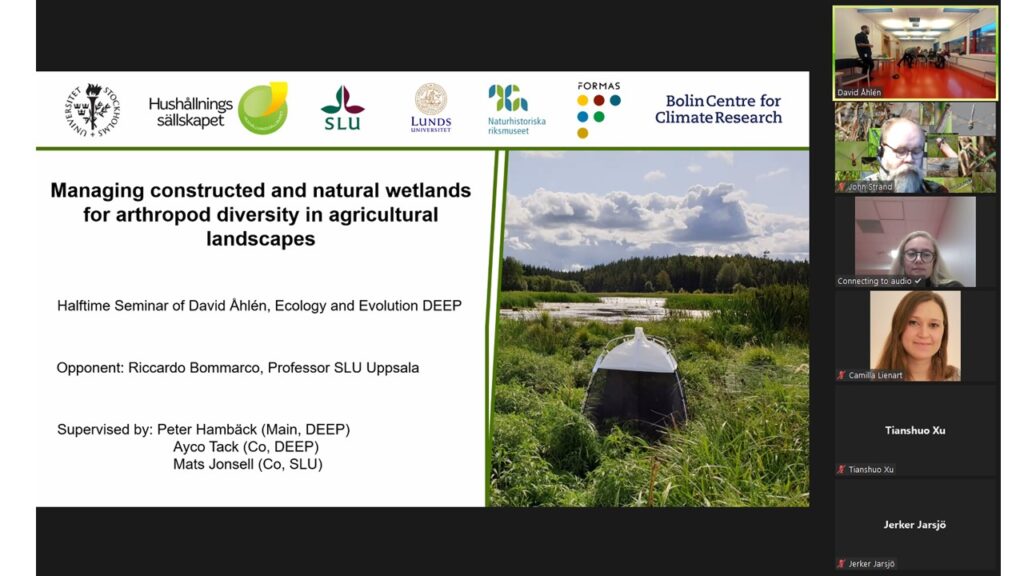
The 19 of November David Åhlén presented results from the Buffer project and the Management project as part of his ”half-time” seminar in his thesis-work at Stockholm University. Opponent was Professor Riccardo Bommarco, SLU. It was a combined live and zoom event and we got to hear interesting discussions on invertebrate food web dynamics at wetland shorelines/flood zones, and effect of management regimes on species abundance and distribution.
A paper on interesting findings from the biodiversity surveys of 2020-2021 has been submitted
Today we submitted the first scientific paper in the project. It is a compilation with commentaries on interesting findings from the biodiversity sampling. It was submitted to the Swedish Entomological Society´s Journal; ”Entomologisk tidskrift”. The title is: ”Insekter och spindlar i anlagda våtmarker: Intressanta fynd från en systematisk undersökning i Uppland och södra Halland” (Insects and spiders in constructed wetlands: Interesting findings from a systematic survey in Uppland and southern Halland).
Conference and work shop in Stockholm
The whole Biowetland project group attended a conference at Stockholm University (Multi-functional wetlands) the 27 of October and thereafter a 2-day workshop with ca 20 researchers discussing a joint paper on Constructed wetlands and synergies and trade-offs of wetland functions. A very good and rewarding 3-day event at Stockholm University and Tovetorp research station. Below are some photos from the conference and the workshop.
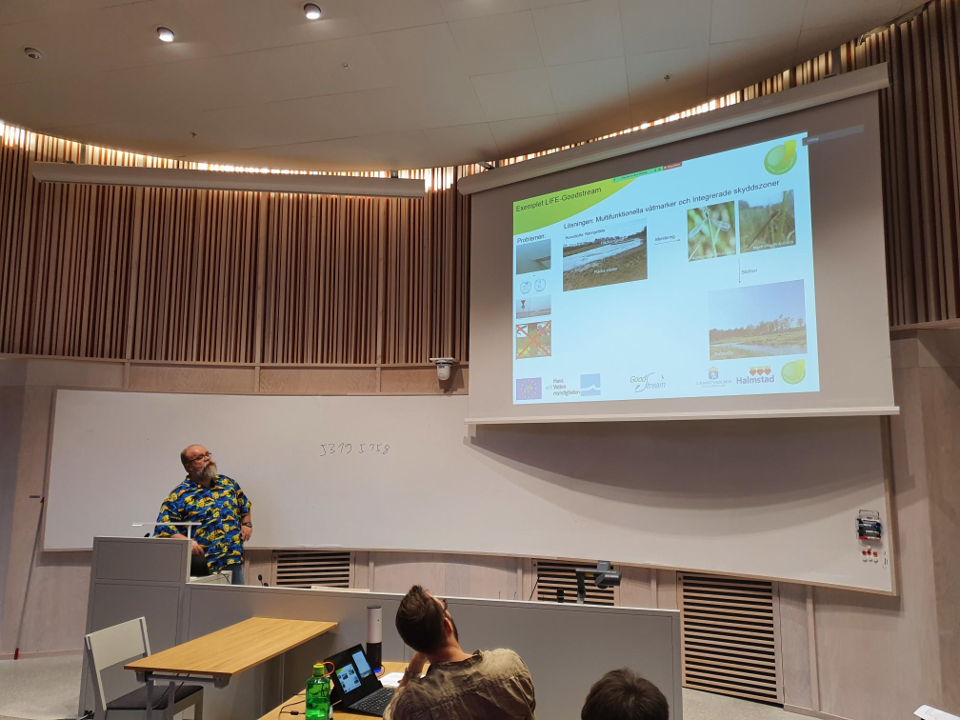
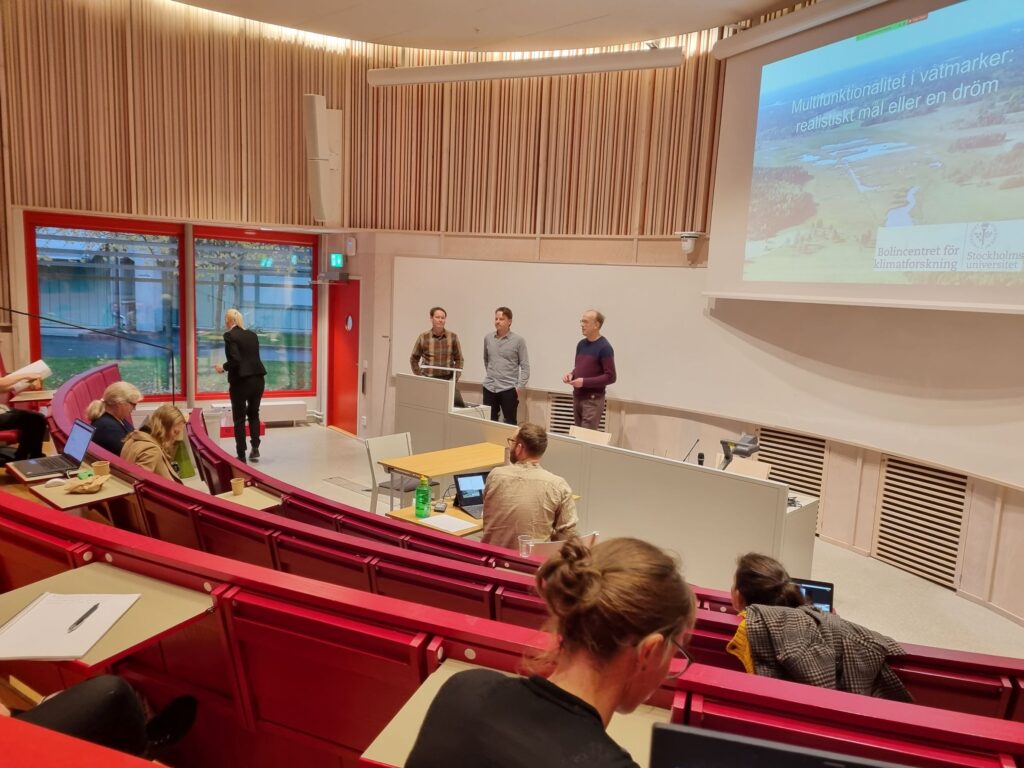
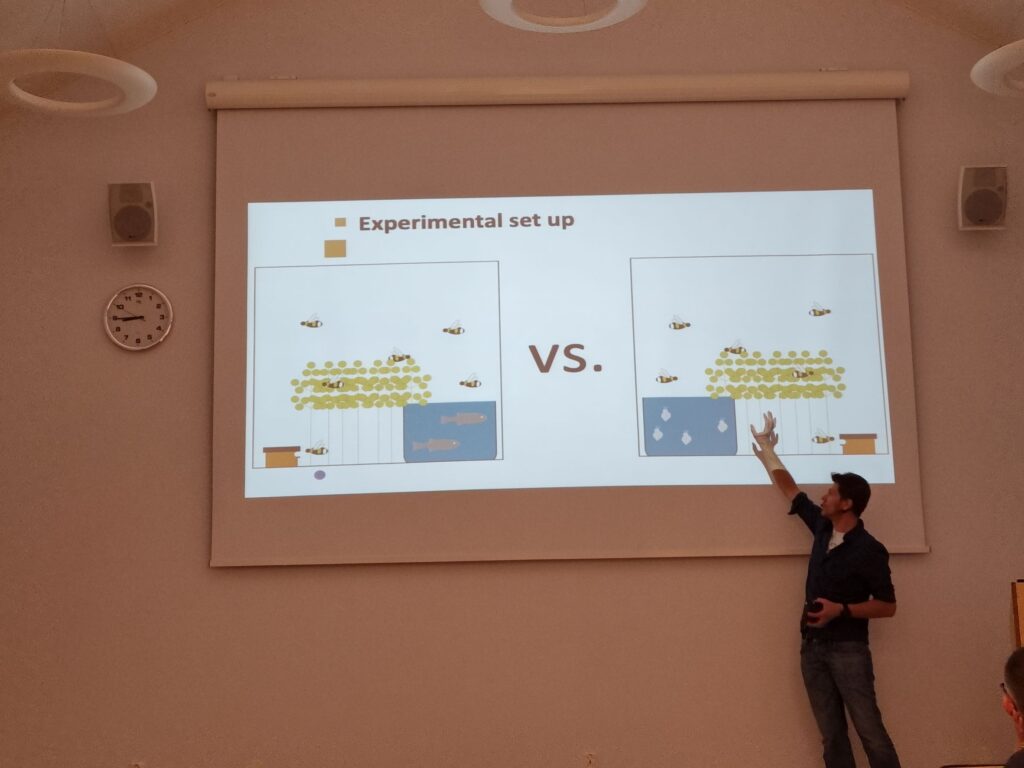

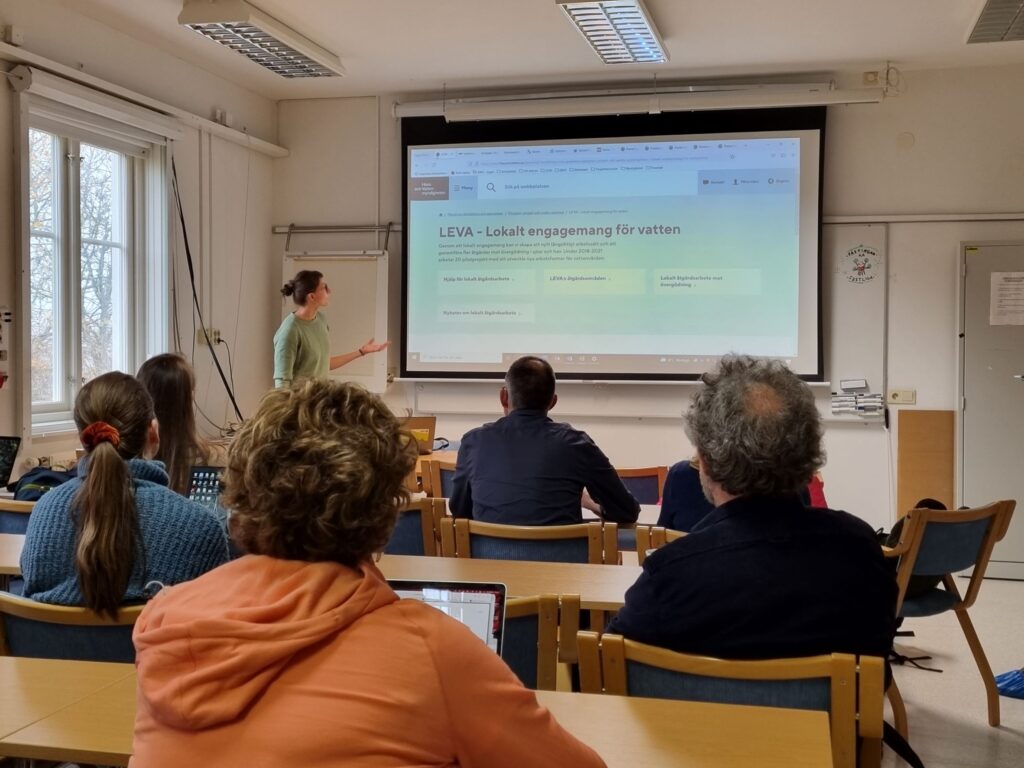
Maintenance of water level meters
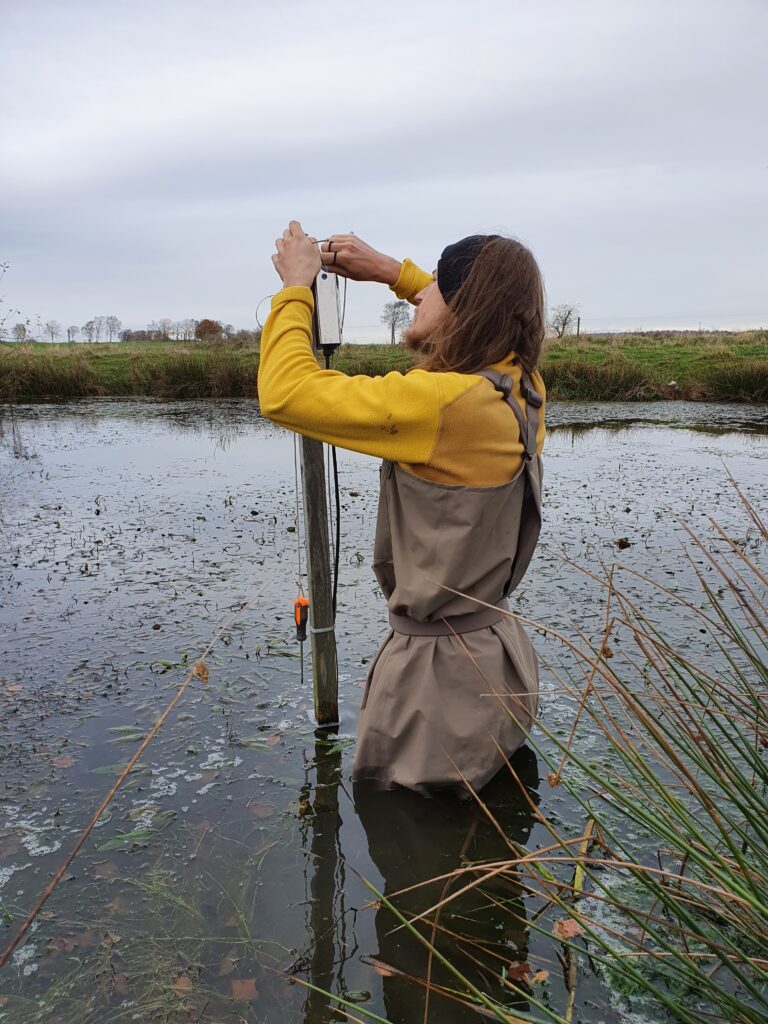
Some time must be spent on mainenance on the 125 water level meters. Here Sam changes batteries in one of them
Second sampling of invertebrates for 2021
Today David arrived in Halmstad for sampling with Malaise traps and pitfall traps in the 14 wetlands that we will empty next year. This sampling toghether with another sampling next year before emptying will serve as comparisons with samplings done after the lowering of the water levels.
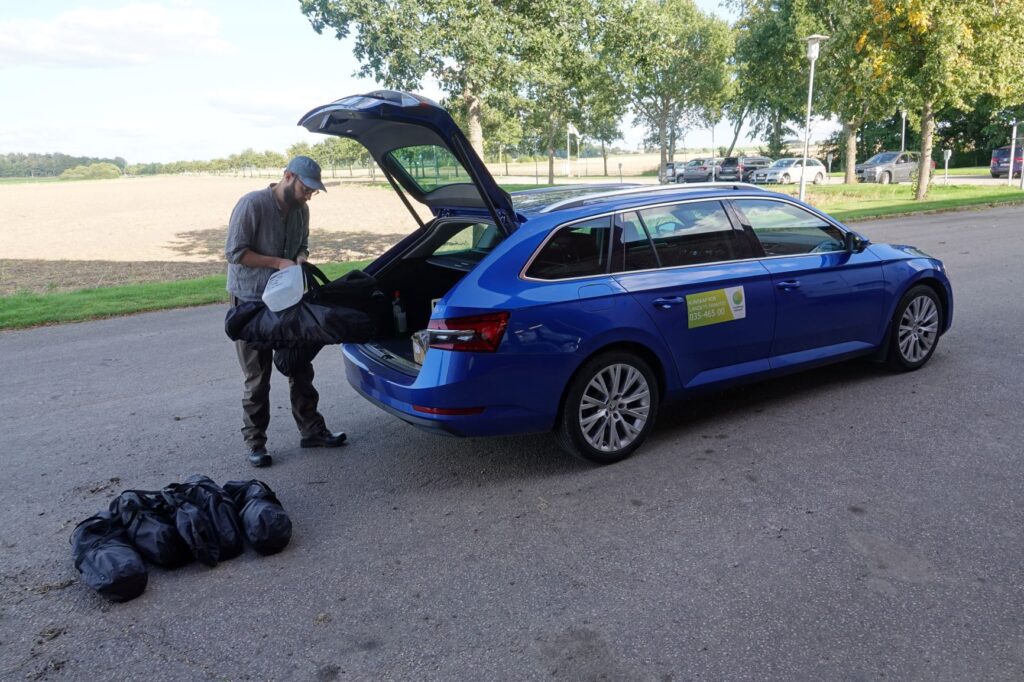
Invertebrate sampling continues this year
Peter has spent some 10 days in July in Halland to repeat the invertebrate sampling in the 50 selected wetlands that were investigated also last year. Focus was on Maialsie-traps. The photo shows the trap at the wetland ”TA25”
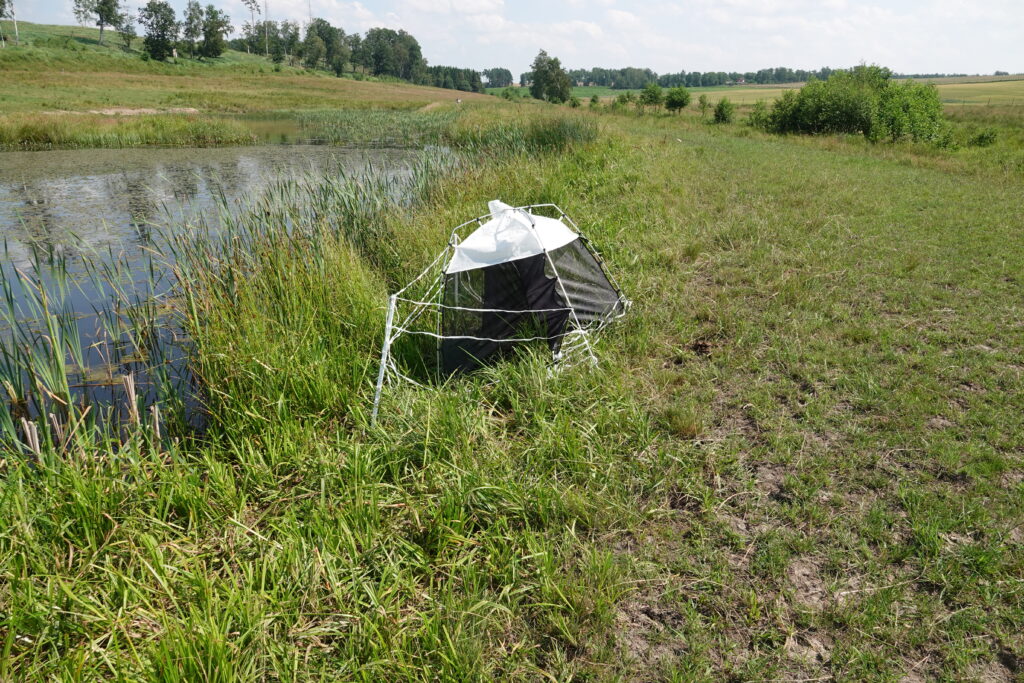
Sorting and identifying organisms continue…
The sorting work is progressing within the project with additional groups fully identified . The very large spider material is now identifed by Raul Vicente, and the dance flies (Empididae) by Sven Hellqvist. Examples from the two organism groups are shown below. Planning for this year’s studies is also in full swing. As we have received funding for nutrient analyzes in Uppland from Bolincentret’s RA3 and RA7, as well as the Albert and Maria Bergström Foundation, we will be able to collect very interesting data to investigate the impact of nutrients on spider and insect communities. We have also received funding for a drought experiment in Halland from Bolincentret’s RA8, and it will be very interesting to see how drought affects spiders’ condition and food preferences.
All the Crane flies (Tipuloidea) are now identified and counted
Another group of insects from the Malaise traps survey in 2020 has now been identified. it is the Crane flies, where we found a total of 47 species in Halland and 39 species in Uppland. Of these, 7 were new species for Halland and 4 new species for Uppland. The most exciting species was Paradelphomyia nigrina, which is a northern species and has only been found a few times in Finland and once each in Sweden (Dalarna) and Norway. The species was found in our traps in Uppland, and identified by Michael Andersson, Sweden’s leading expert on Crane flies. He has also taken the photo below

New species for Sweden in our sampling!
The first results from last years sampling of invertebrates have now been delivered by the experts that have spent the winter sorting, counting and identifying the specimens. One group that has been done so far is the family of dancing flies (Empididae). Among the specimens was a species never encountered in Sweden before! It is the fly Hilara manicata. Apart from this new species for Sweden, also 3 new species for the County (Halland) were found. Several organsim groups remain to be counted and identified, e.g. spiders and beetles and it will be interesting to see if we get more surprises.
First meeting with the WetKit project
Today we had a very good meeting with the researchers from the project WetKit (www.wetkit.weebly.com). We will cooperate regarding sampling sites and sampling strategies and will thus get more data from the sites leading to better understanding on e.g. multi-functionality of CWs. See also under the tab Networking
Sorting of samples
Now the sorting of the samples is on the way. Victor Eriksson is hired to sort out the groups of interest, that will later be sent out to experts for species determination.


Done!
The collection of arthropods is done for 2020! The season has been very rewarding, with more than 550 samples collected between the 75 total wetlands in Halland and Uppland.
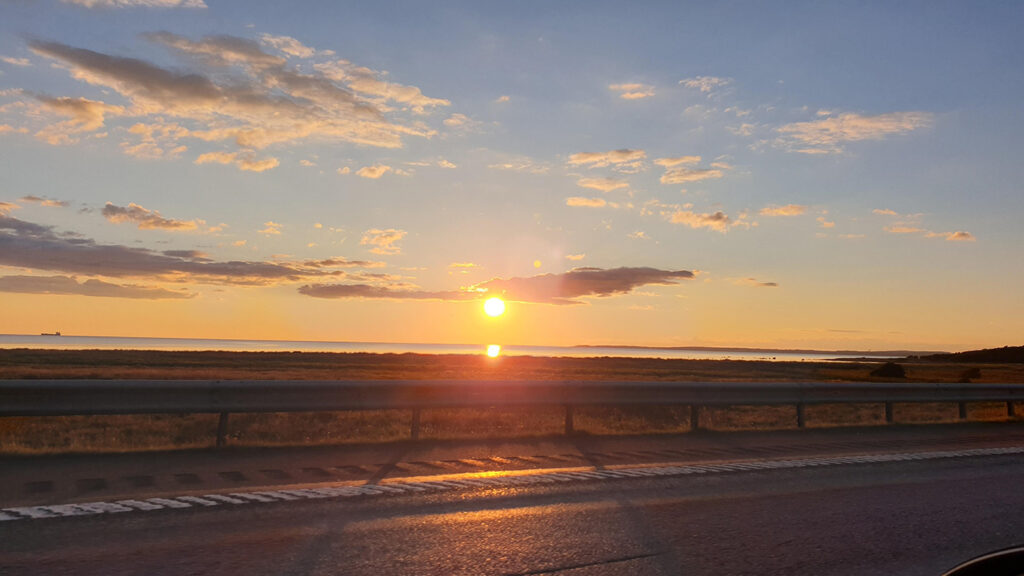
Cows
When doing sampling close to livestock, you always have to anticipate setbacks. The cattle at this location close to Båstad on the border between Halland and Skåne, showed a particular interest in trampling the Malaise trap, twice!
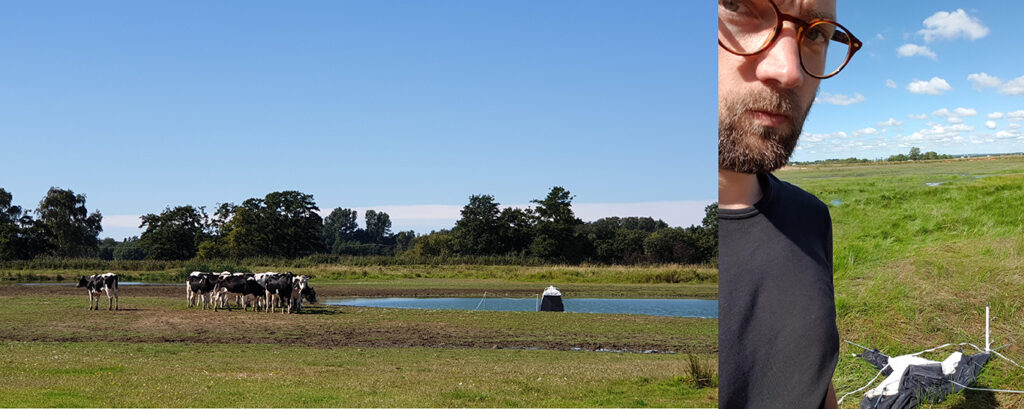
Last collection this year
The last collection of the year in Halland is now on the way with Malaise trapping and suction sampling. Just east of Halmstad, close to Årnarp we found this Wasp spider (Argiope bruennichi) which is a rather recent immigrant to Sweden.
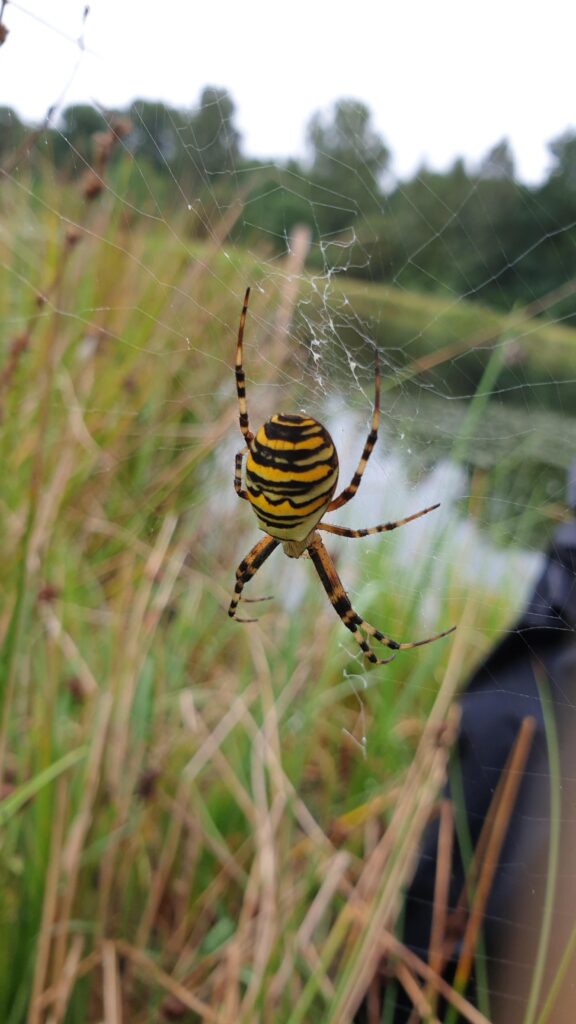
Collection spiders
In Uppland we are also collecting spiders for gut content analyses. The process is similar to that of the suction sampling, only we are using an InsectaZooka and exchangeable collection socks to minimize the cross-contamination risks, as well as cleaning the equipment with bleach. This concludes the sampling period in Uppland for 2020 in late-August.

Third collection
The third and last leg of collection is on the way, with Malaise-, and pitfall trapping, as well as with suction sampling in both Uppland and Halland. Seen here is the pitfall trap that measures 7cm in diameter and 6.5cm deep, and is filled with soapy water; mounted at Senneby wetland, close to the Baltic coast north of Stockholm.
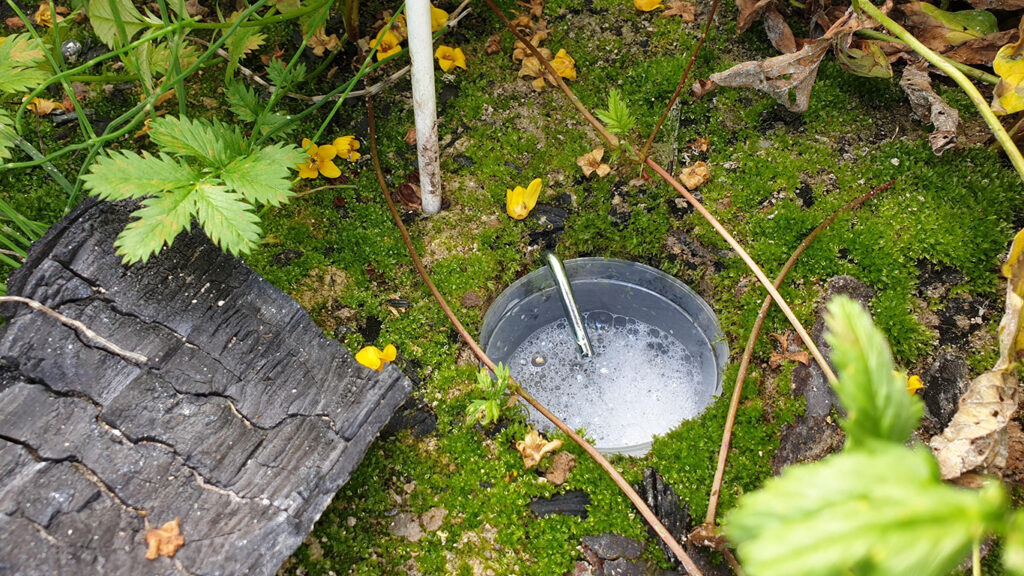
Second collection
The second collection, with more Malaise-trapping in both Uppland and Halland is now in action. After the hot-streak during the midsummer week, we hope to find plenty of insects around the wetlands. This picture is taken at Hemmesta sjöäng, a reconstructed wetland east of Stockholm.
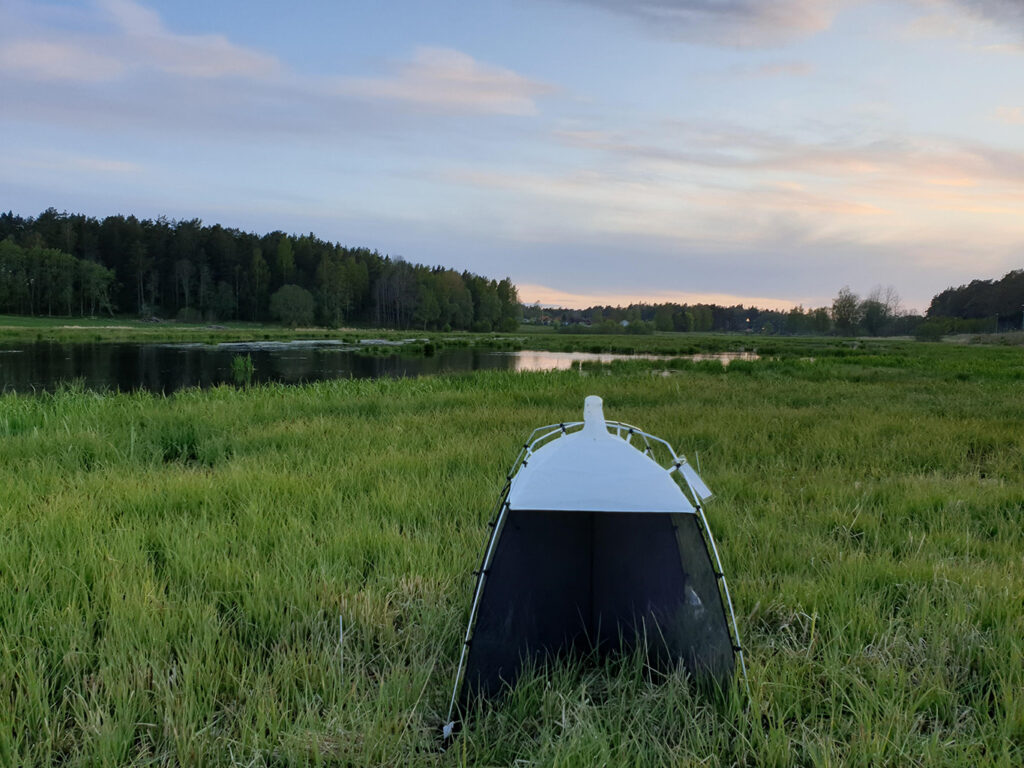
Inverted leaf blower
Collecting ground living arthropods using an inverted leaf blower is an effective way to gauge the density of their communities. The spiders and insects that get sucked up is transferred to a white tub, from which it is easy to pooter-out the individuals of focus.

Arthropod collection
The start of the years arthropod collection! The collection methods we use are suction sampling, pitfall trapping, and Malaise trapping. The tent-like trap is a Malaise trap, invented in the 1930’s by René Malaise, and optimized for catching flying insects. The collections will be done at 25 wetland locations in Uppland, and 50 in Halland (see distribution in Project Area section). This trap is placed at a constructed wetland at the Bergianska garden, just west of Stockholm University.
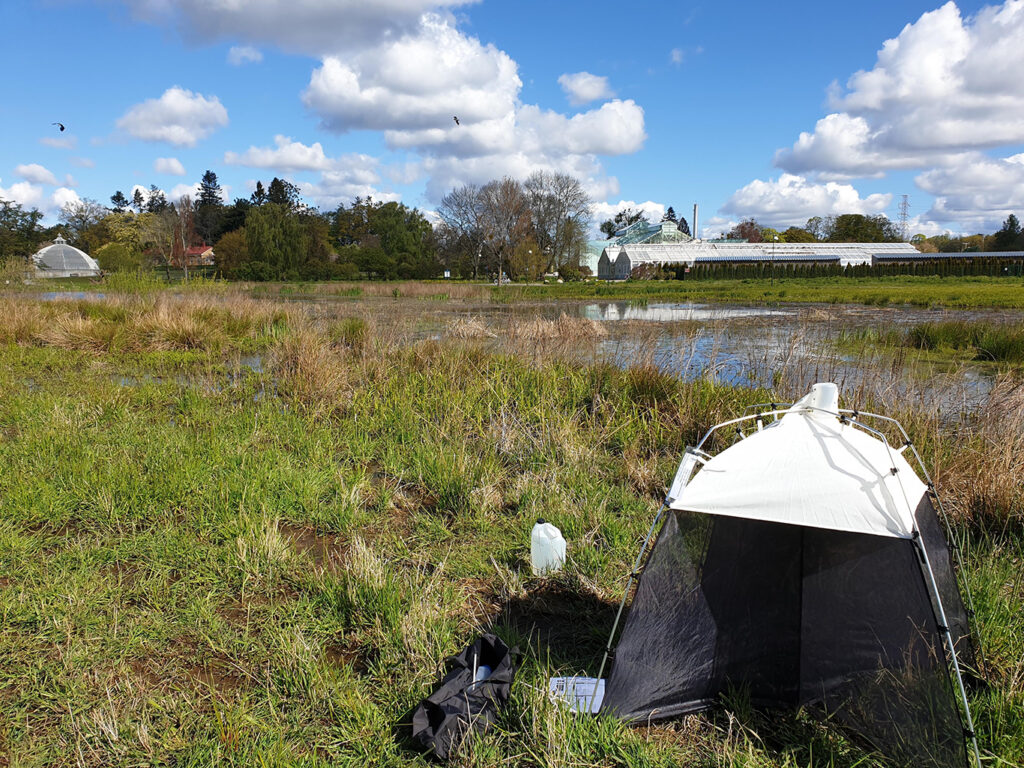
BioWetland is launched
Welcome to BioWetland!
Wetlandscapes & Biodiversity – Buffer, Biodiversity and Bees
Research on how constructed wetlands(CWs) function hydrologically in a river basin perspective and how hydrology and its interactions with wetland design, location and management affect the biodiversity in wetlands and at the landscape level, with focus on arthropods in terrestrial-aquatic boundaries and pollinators.
